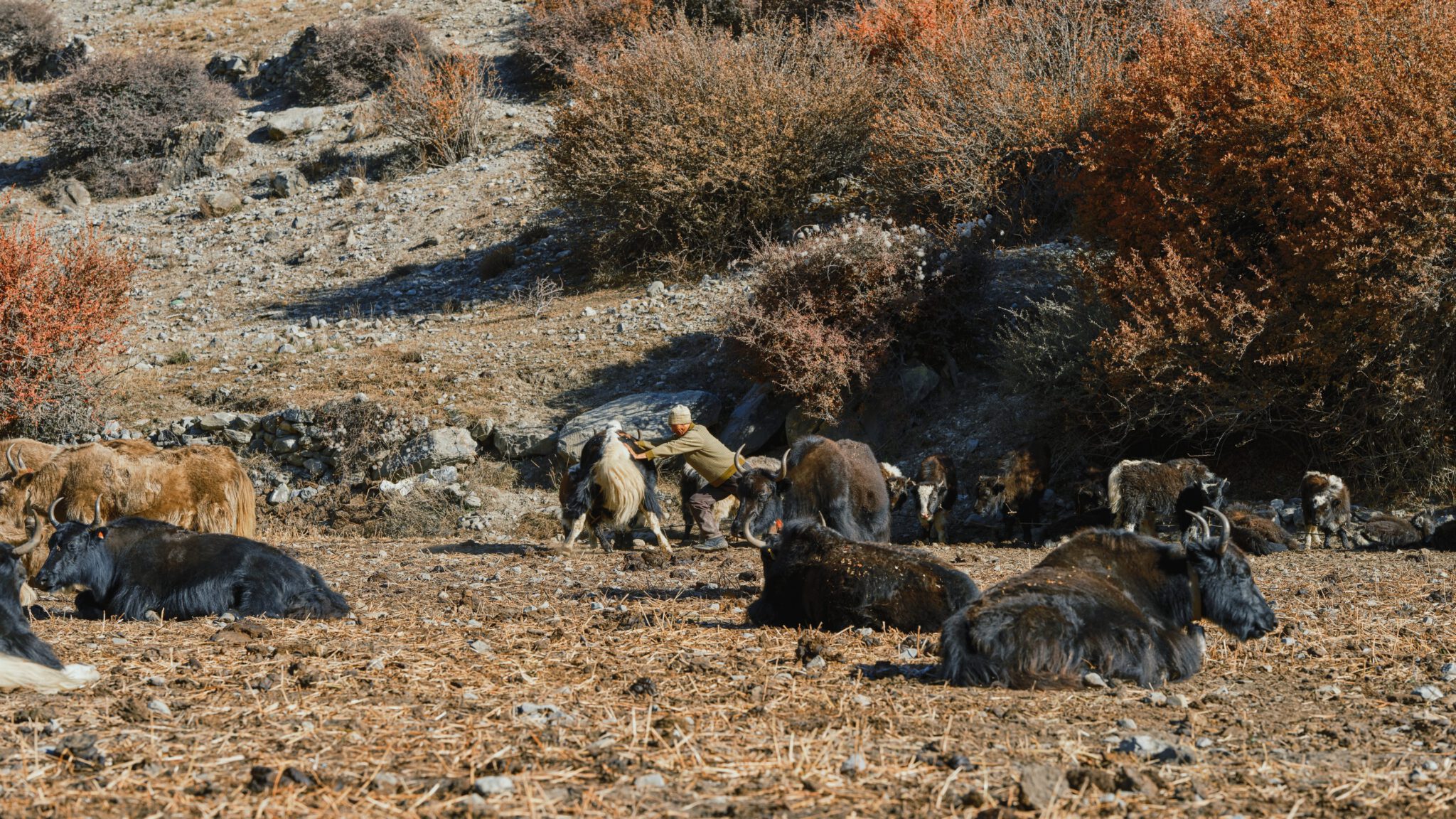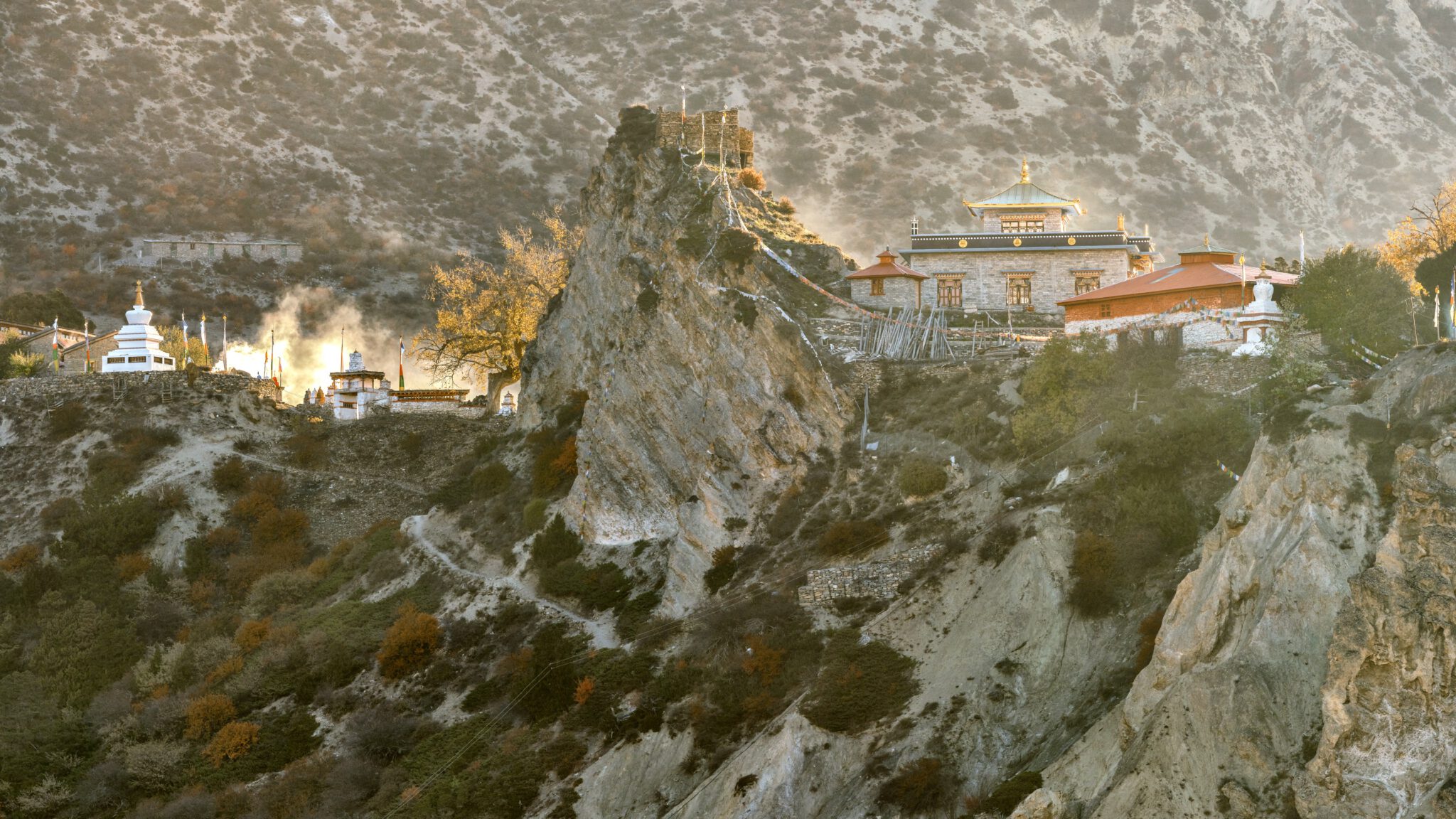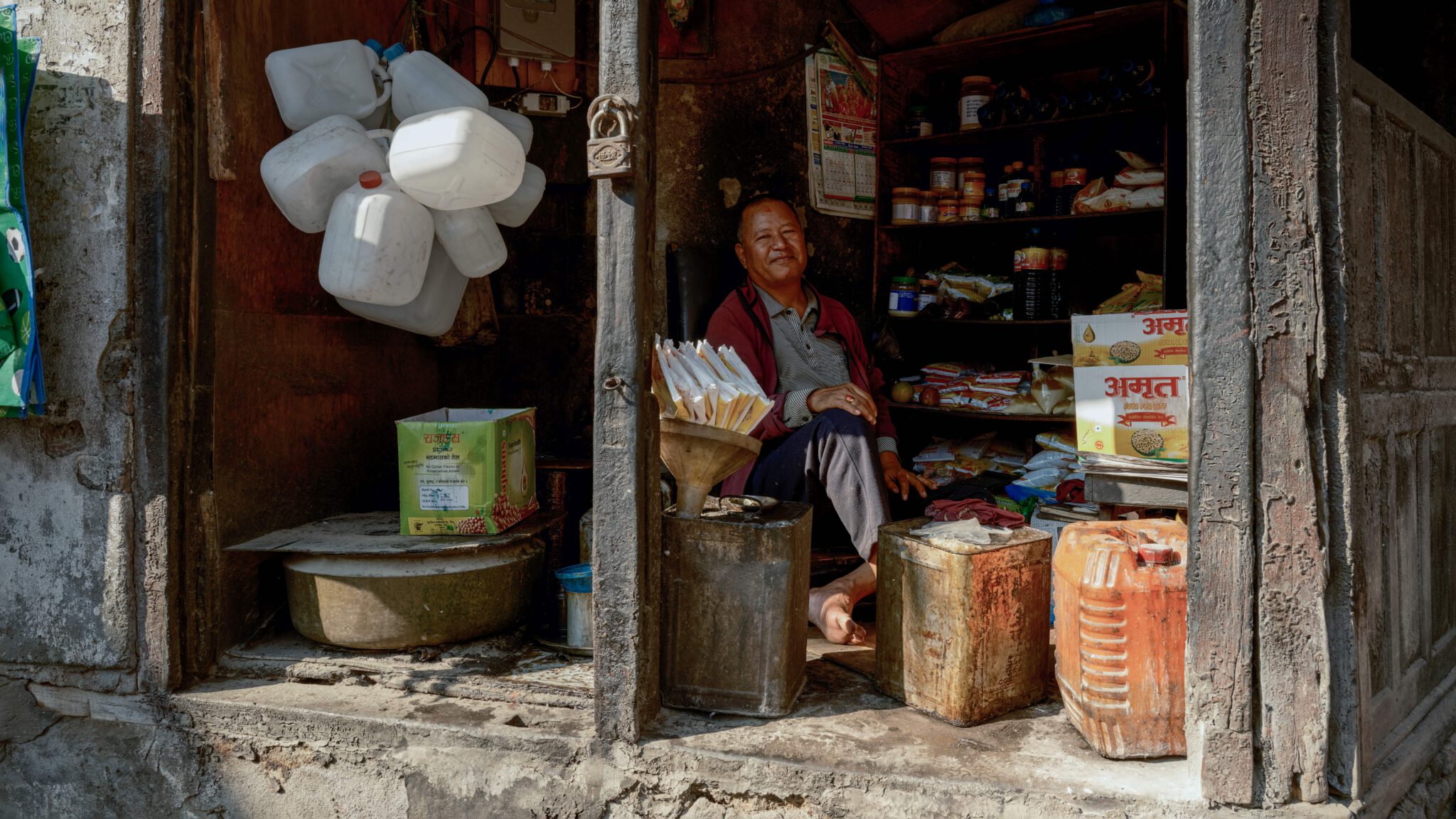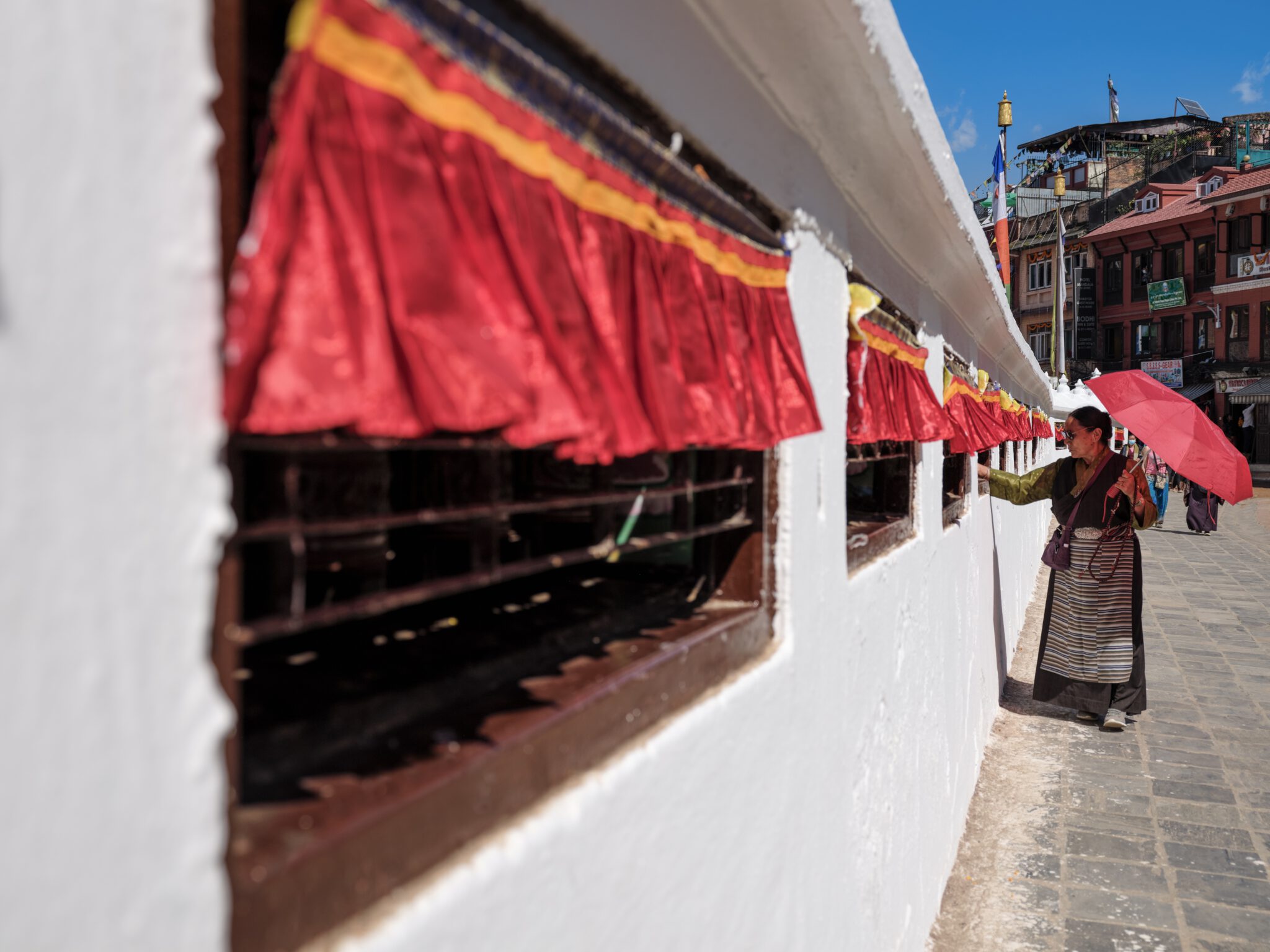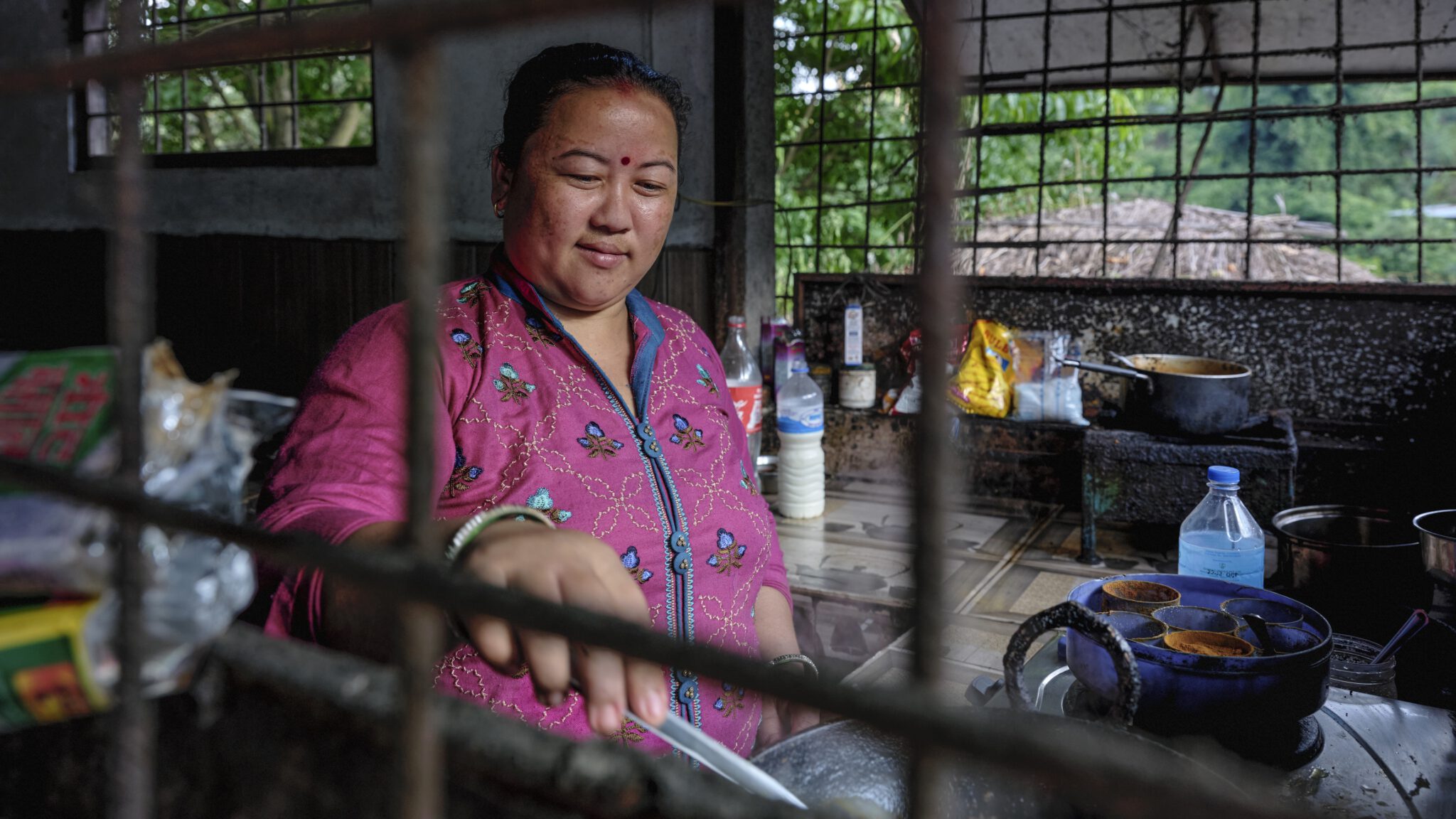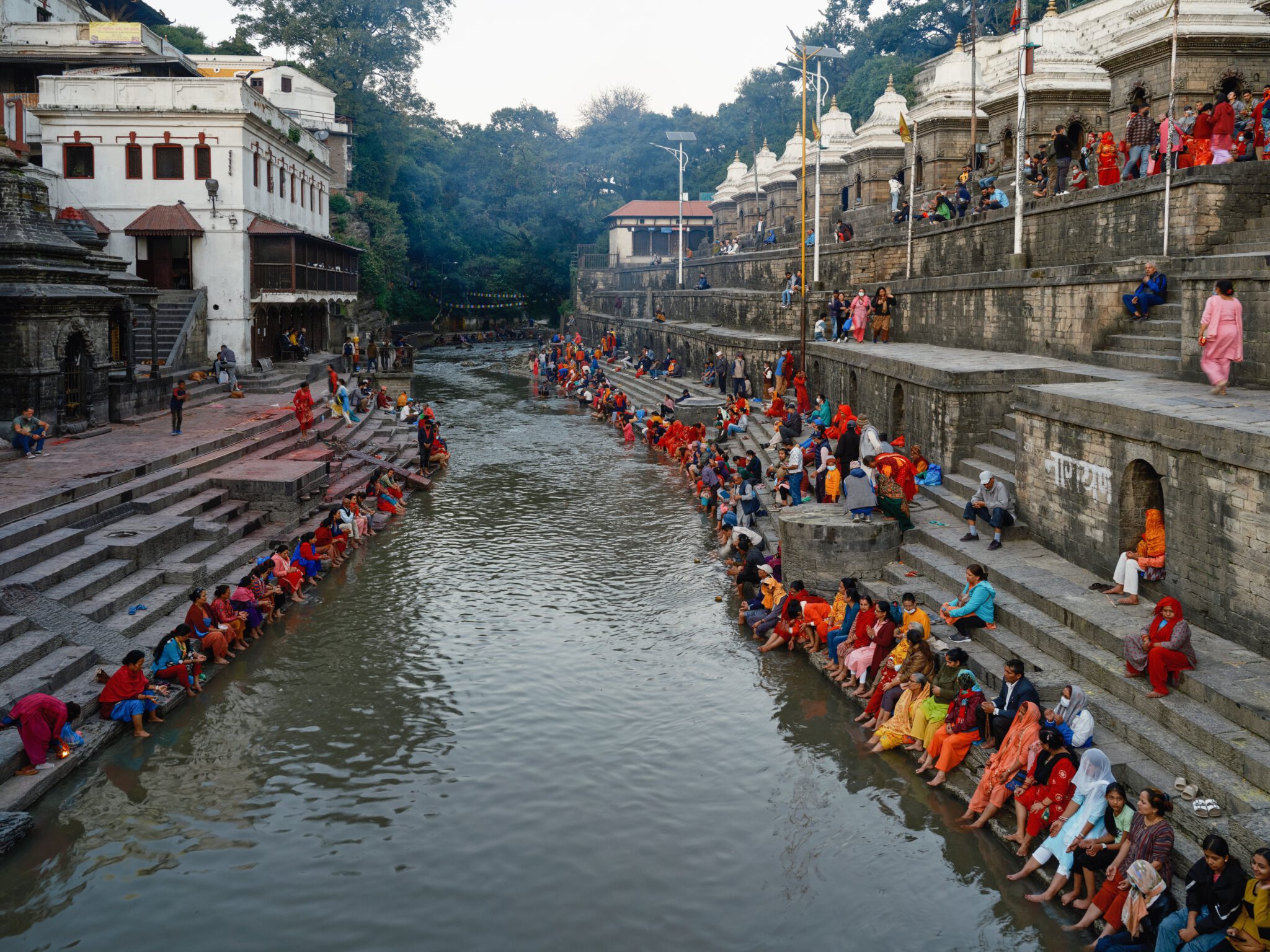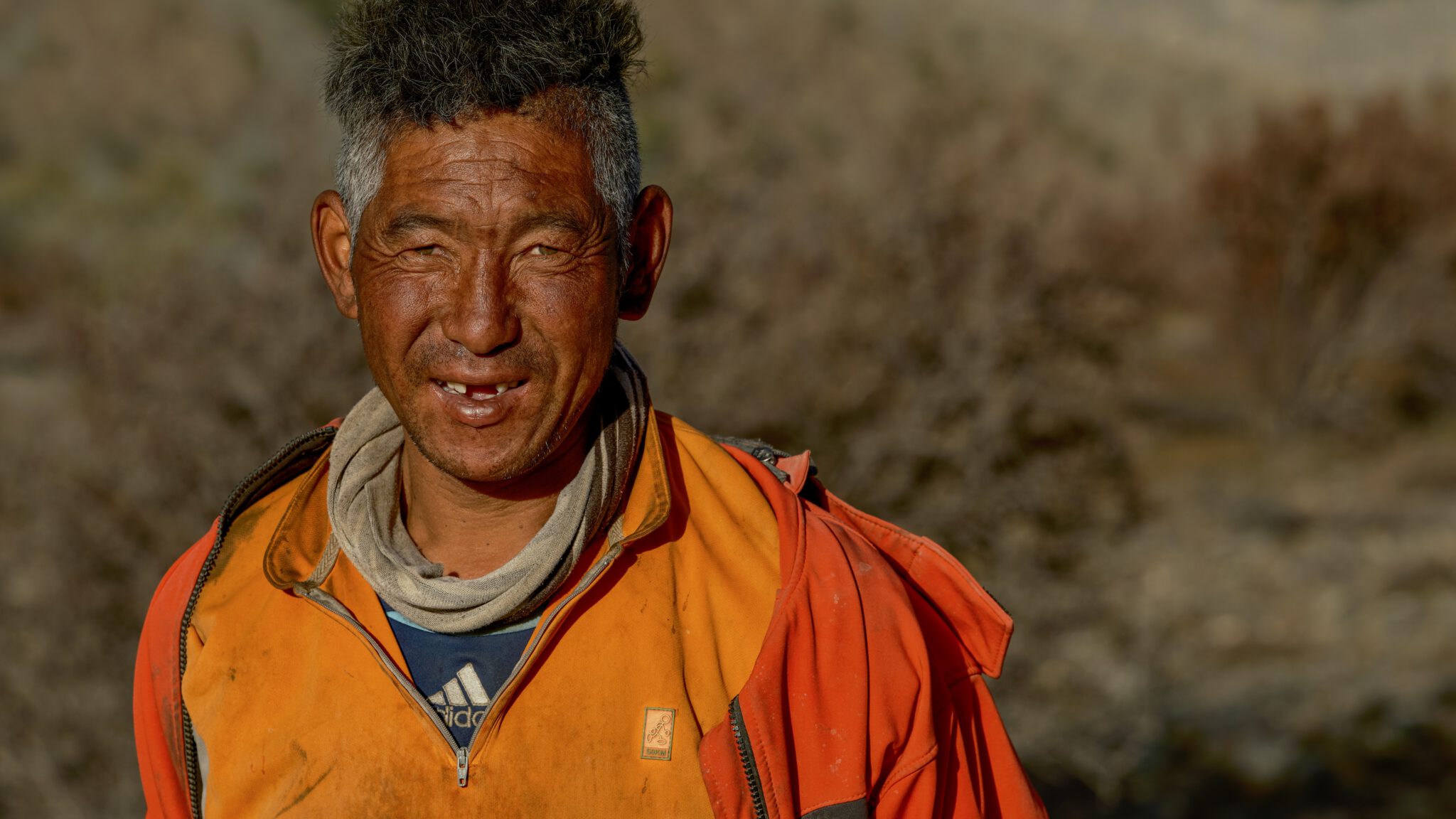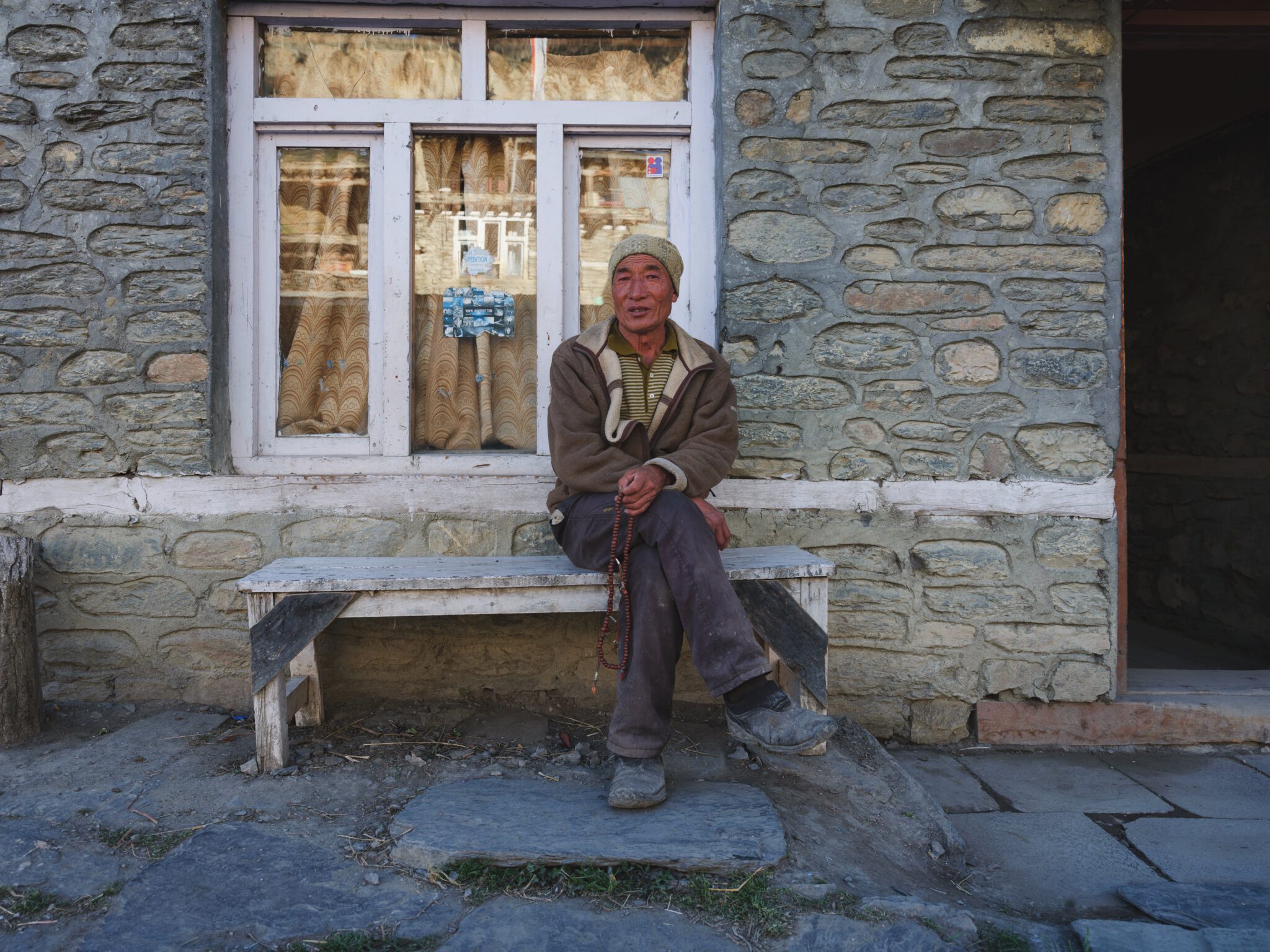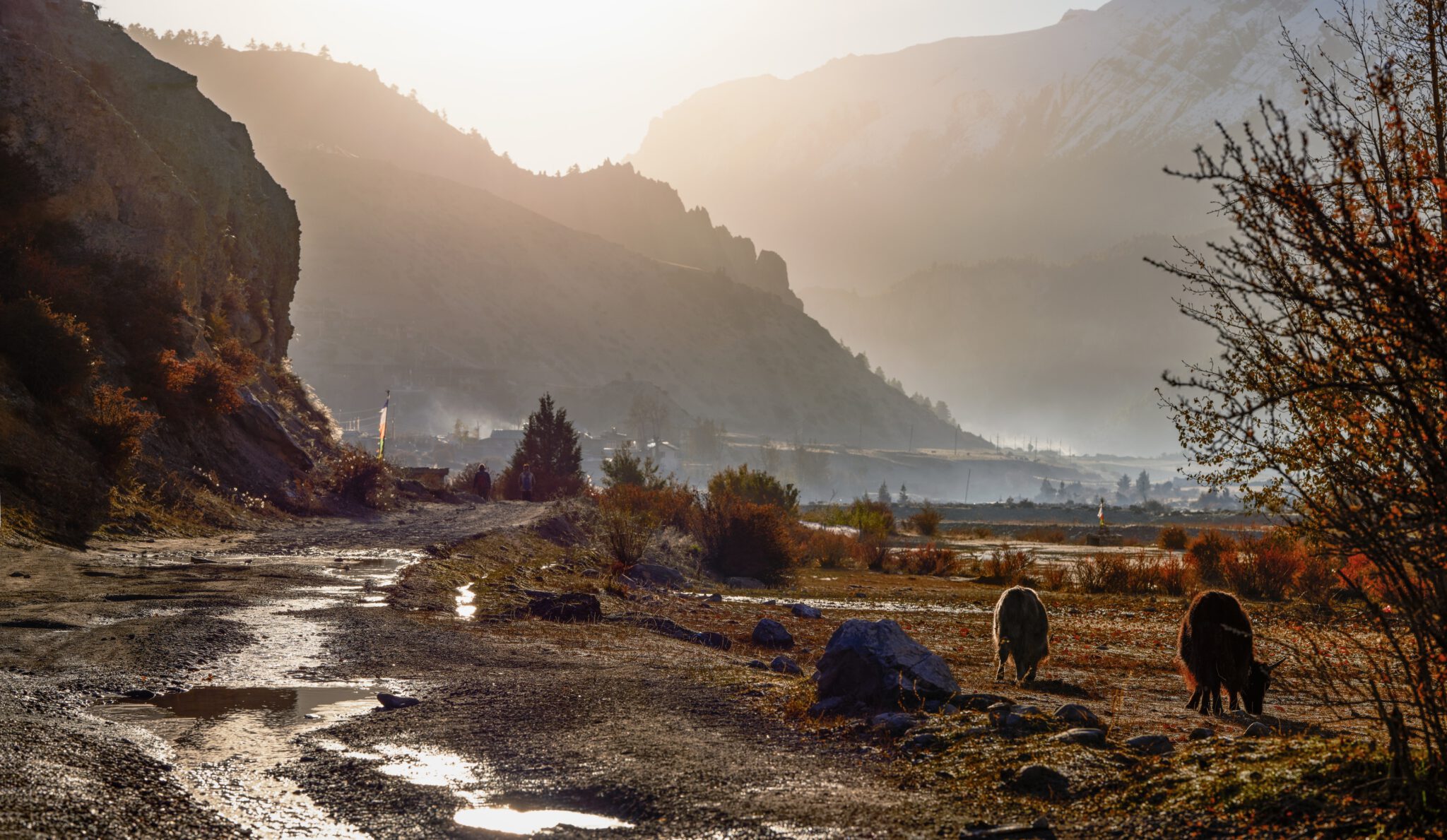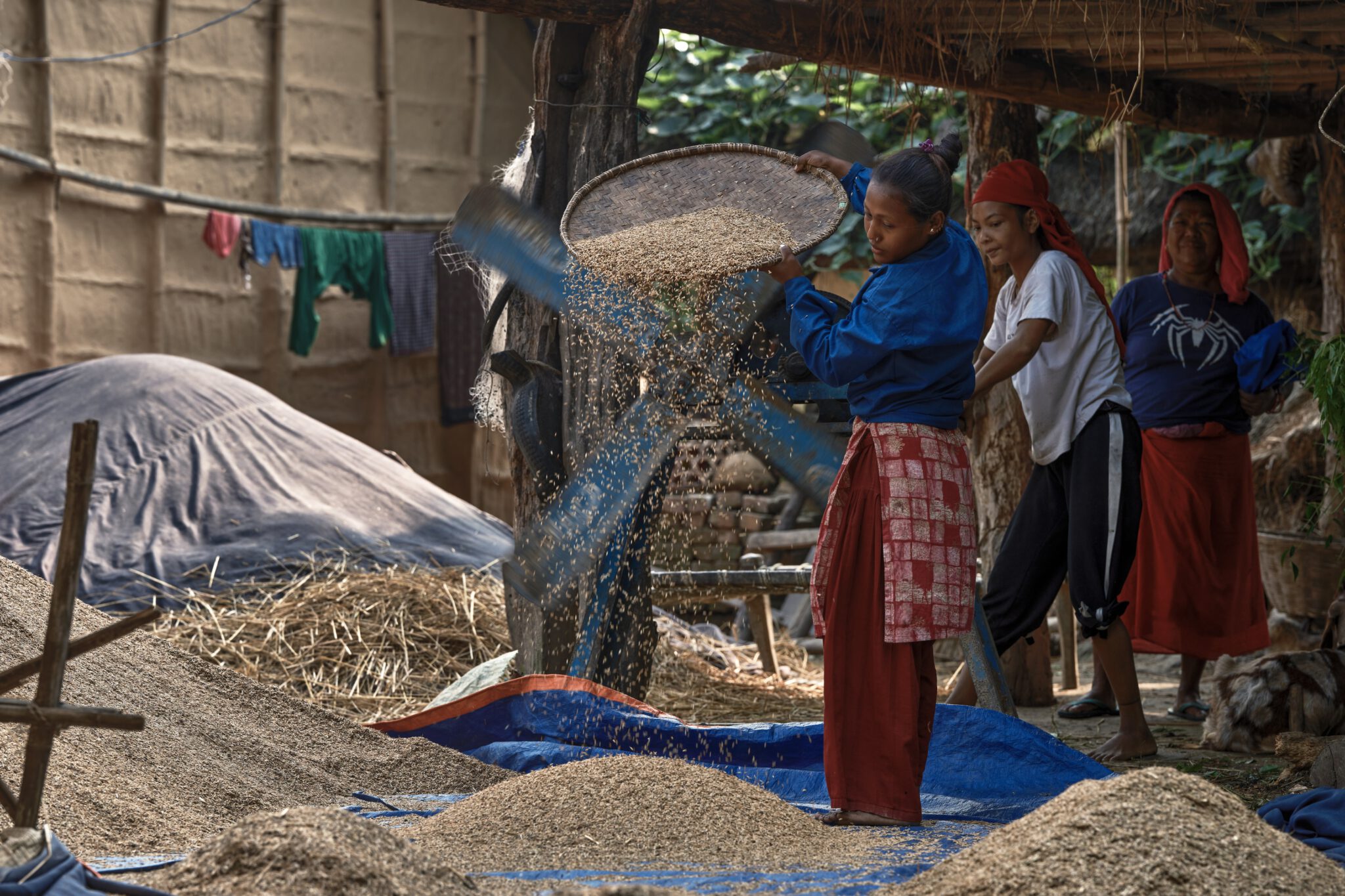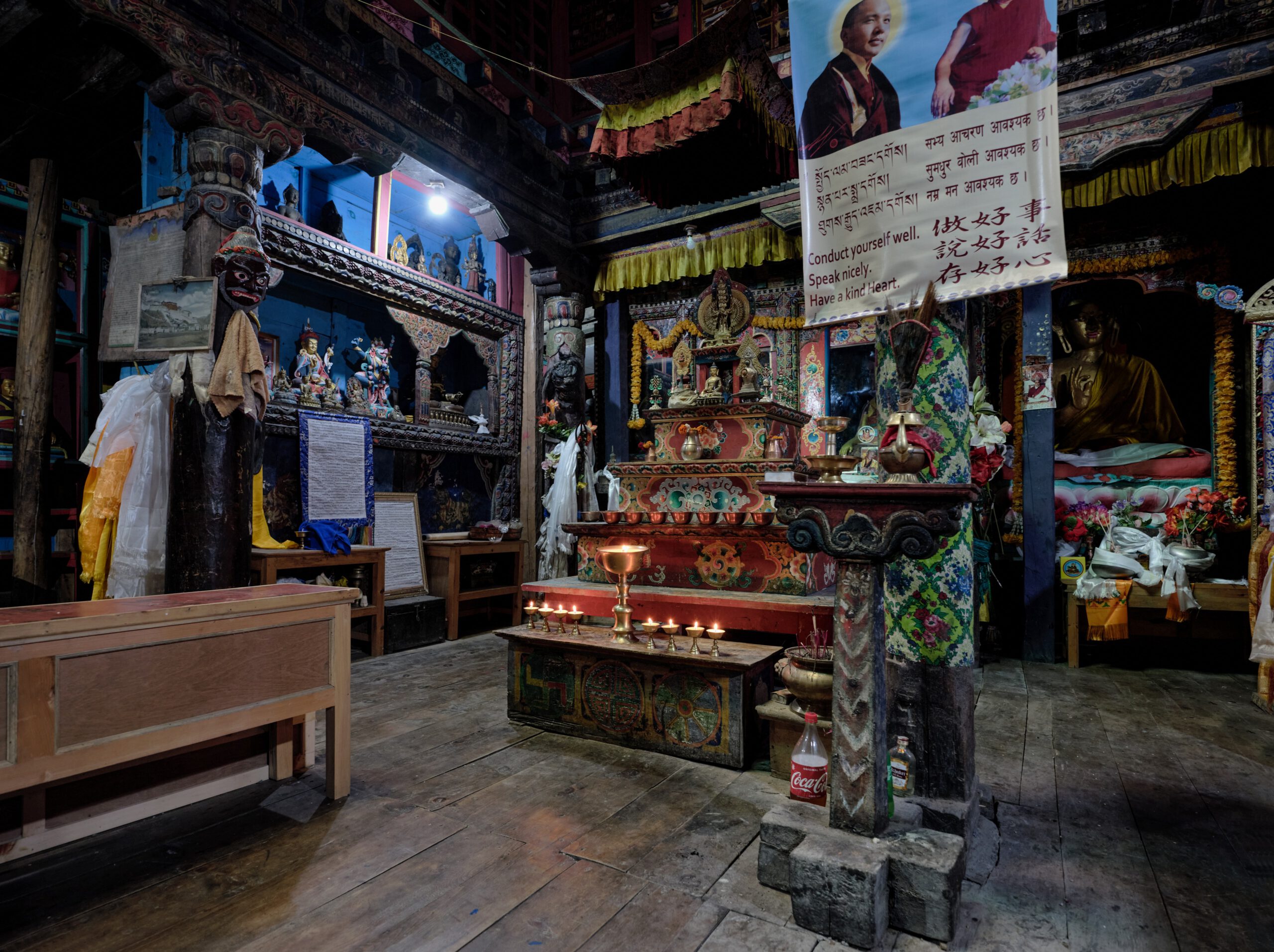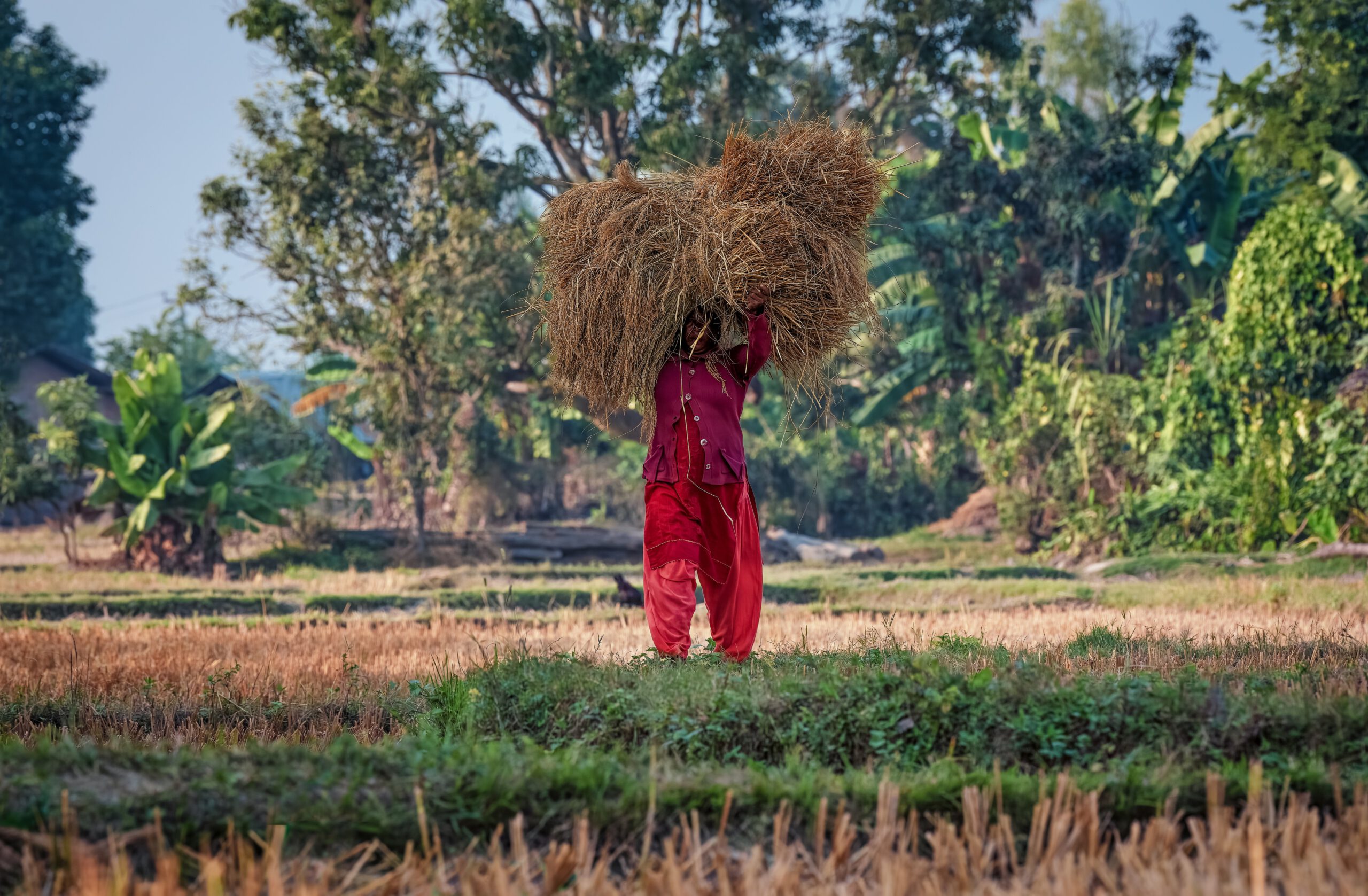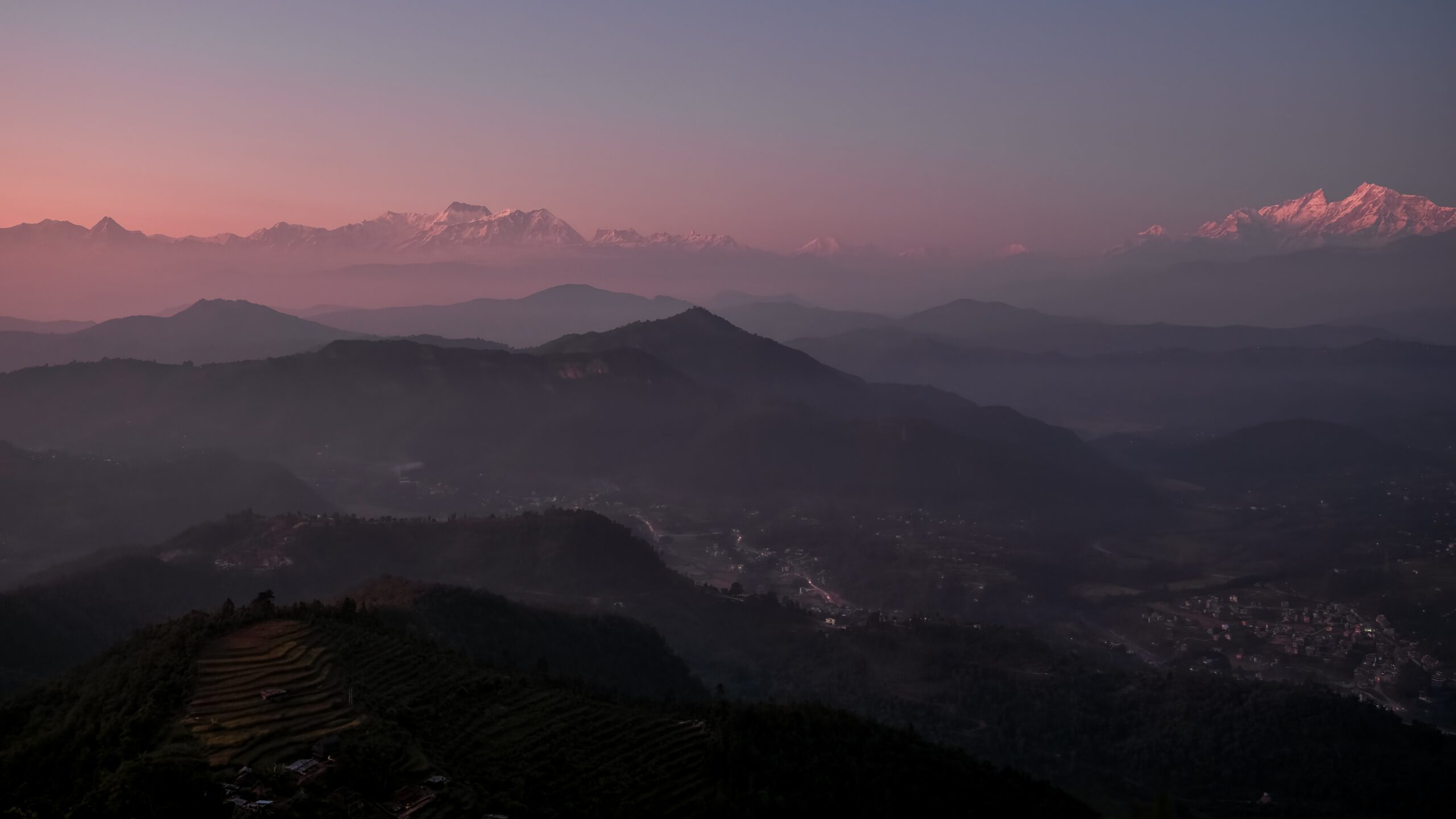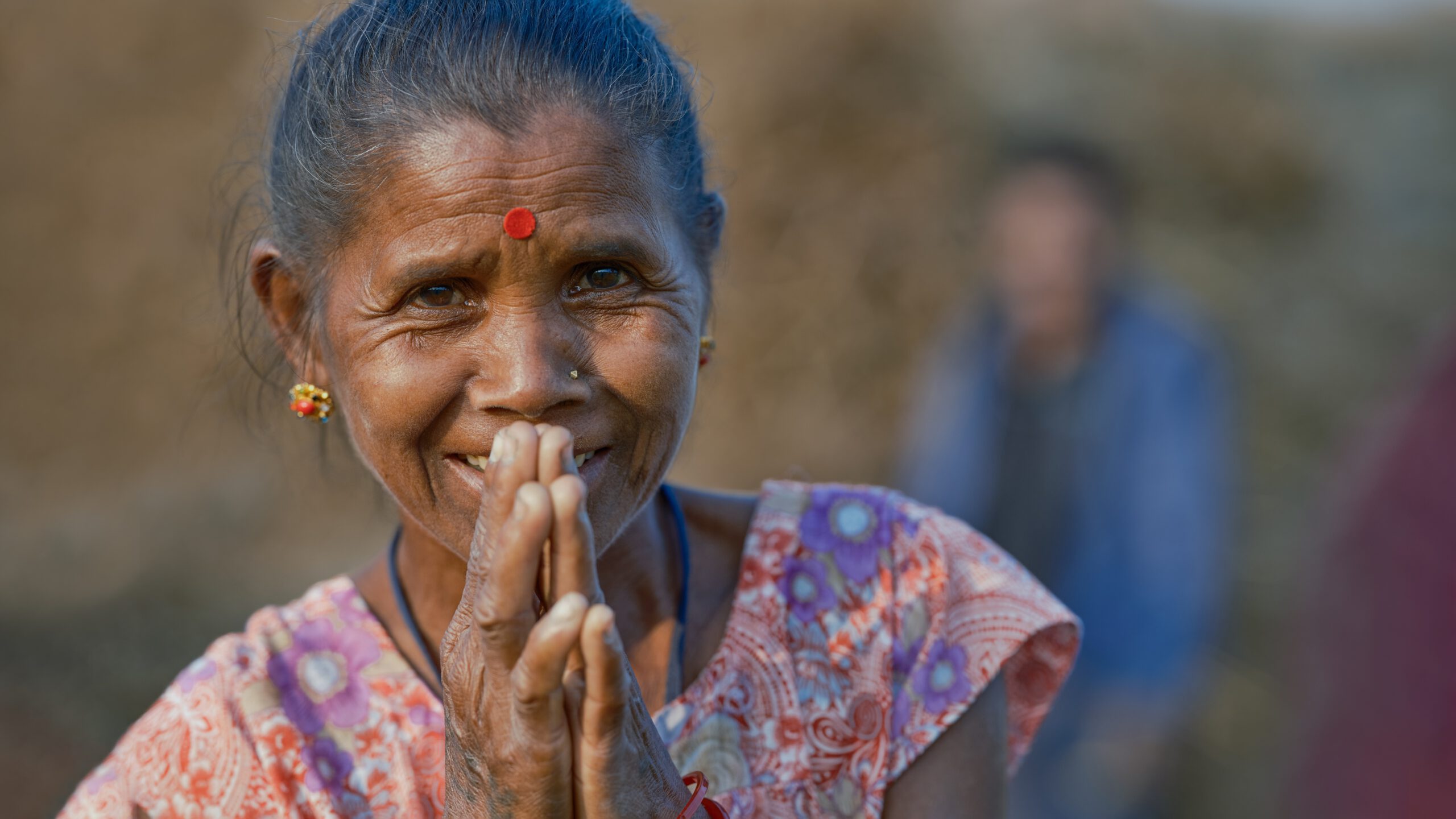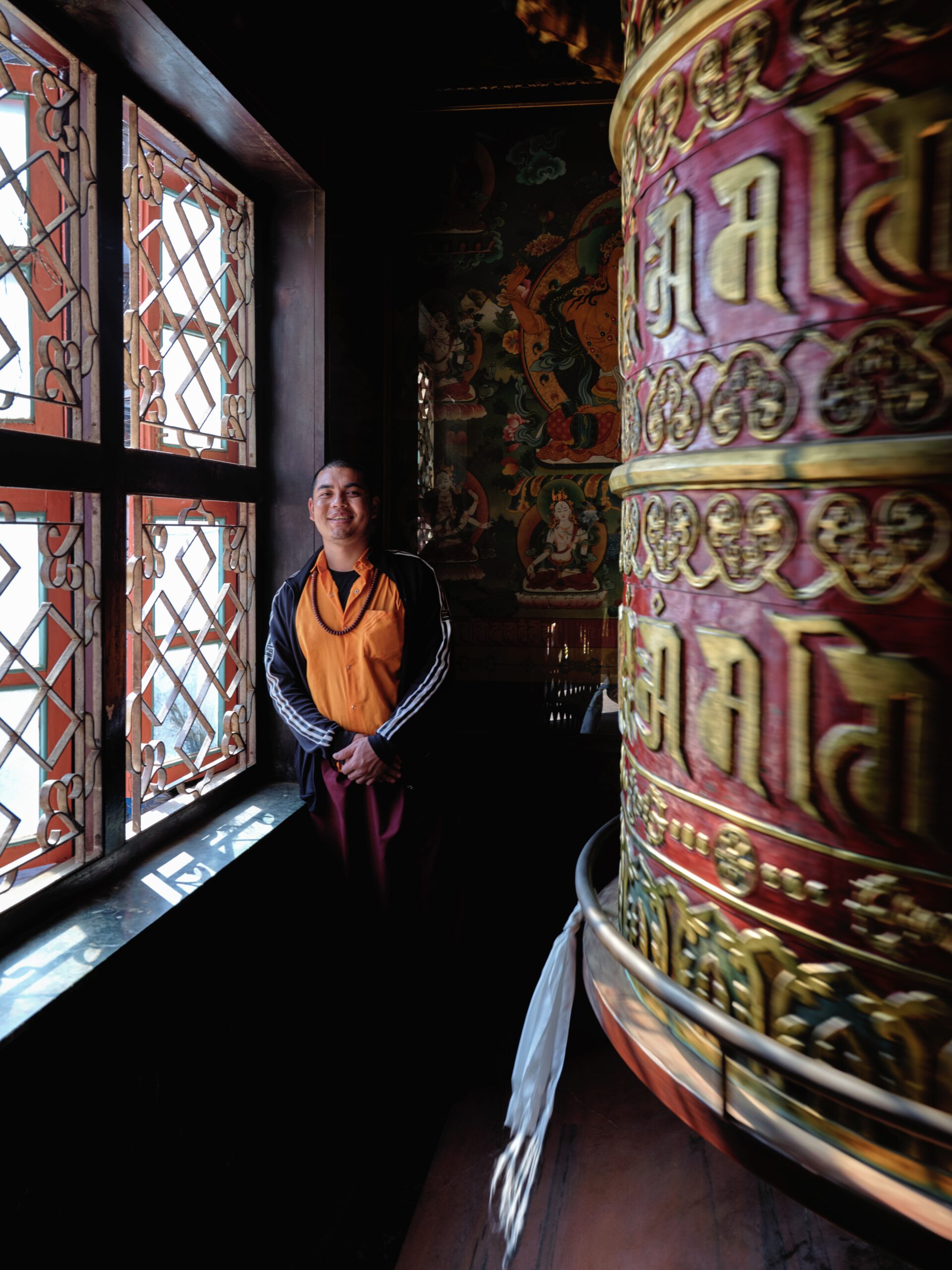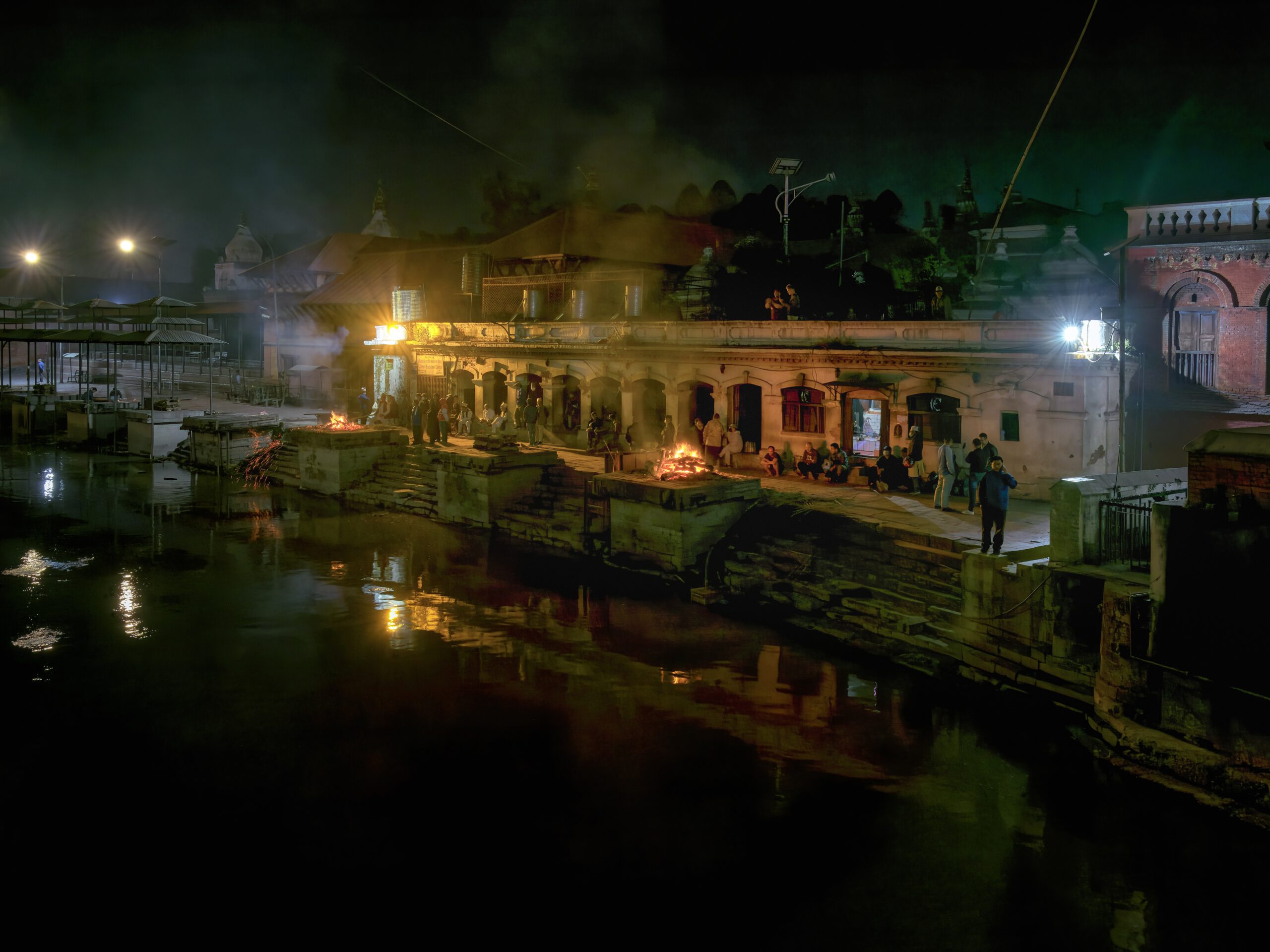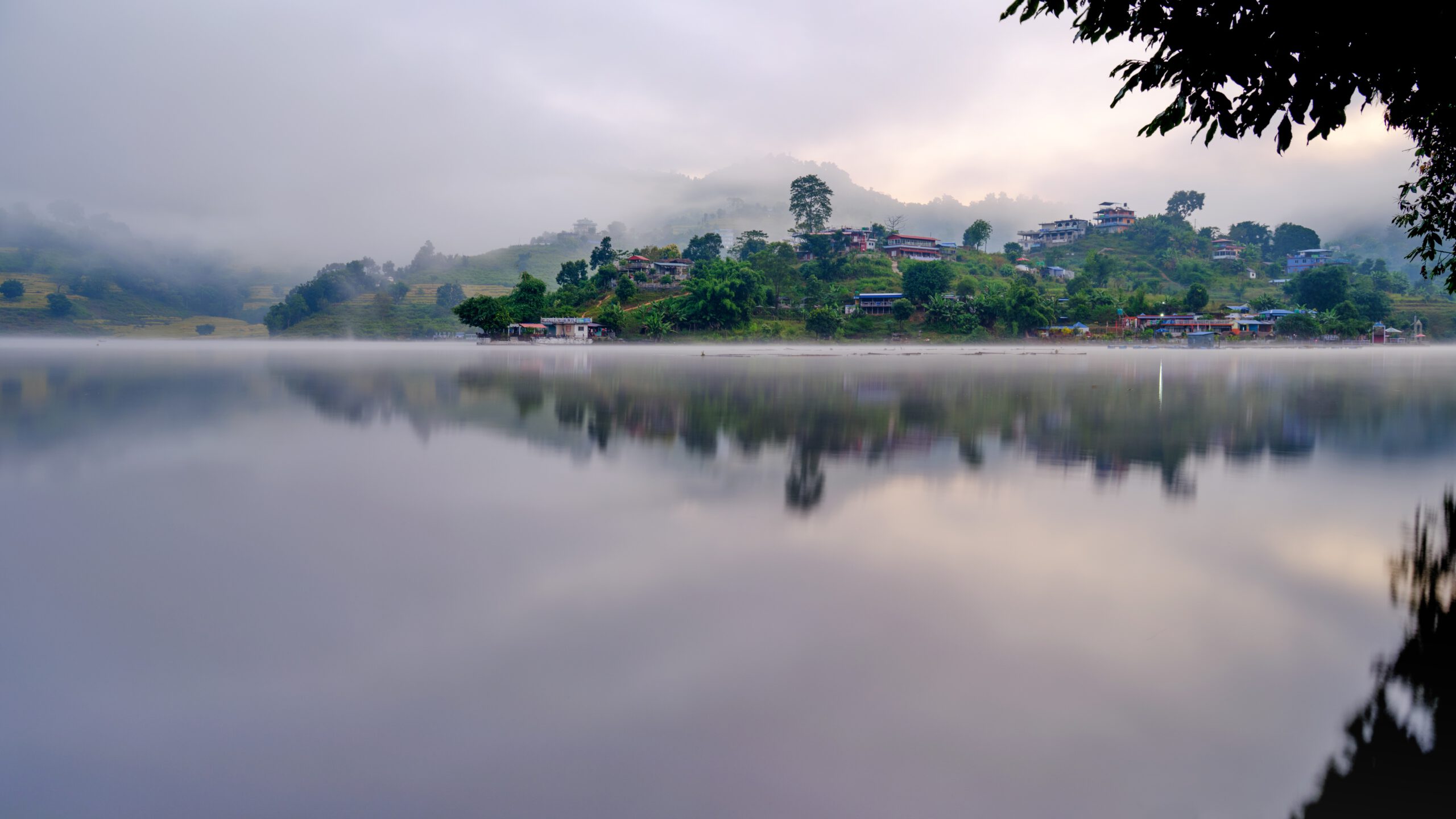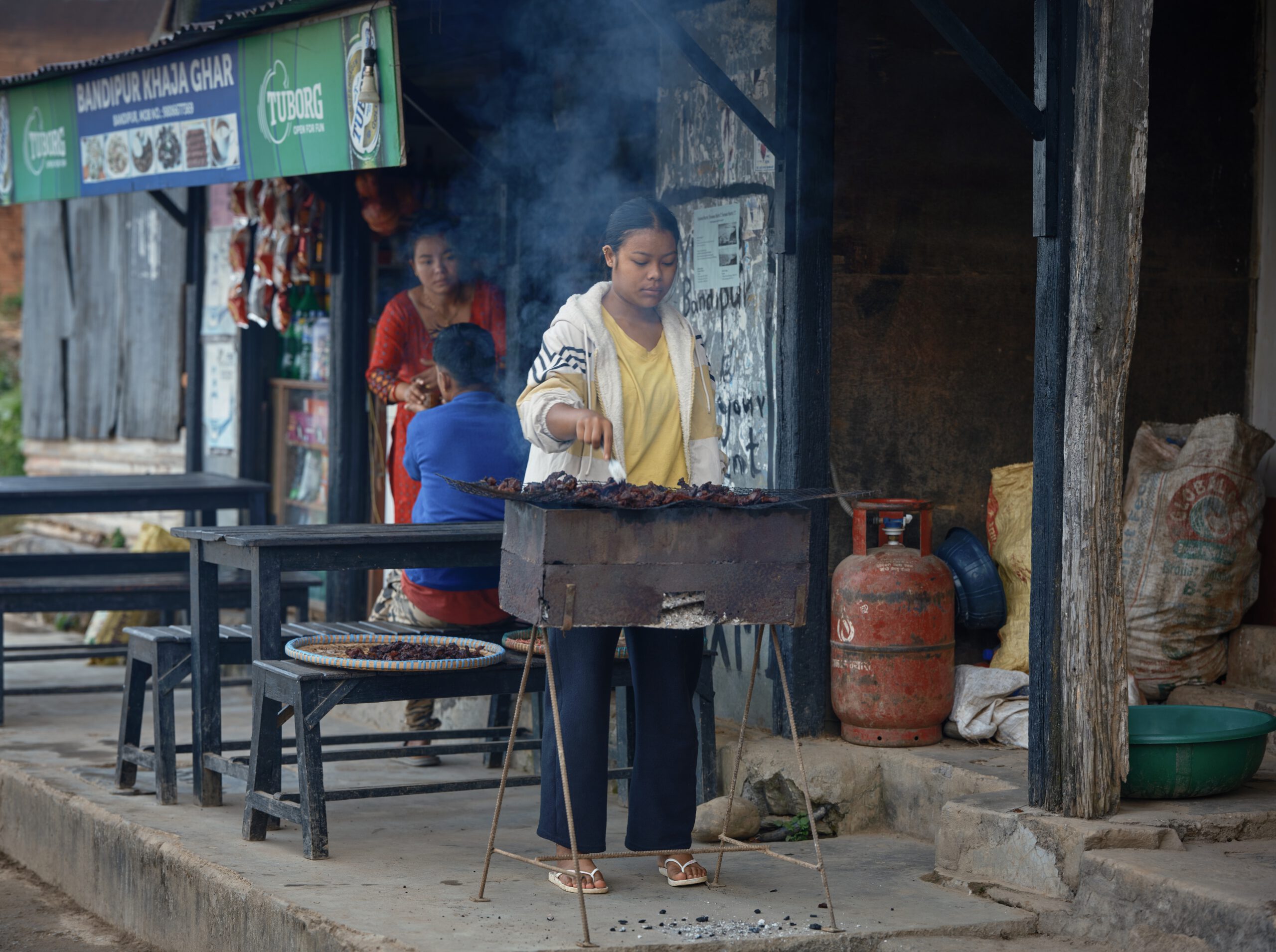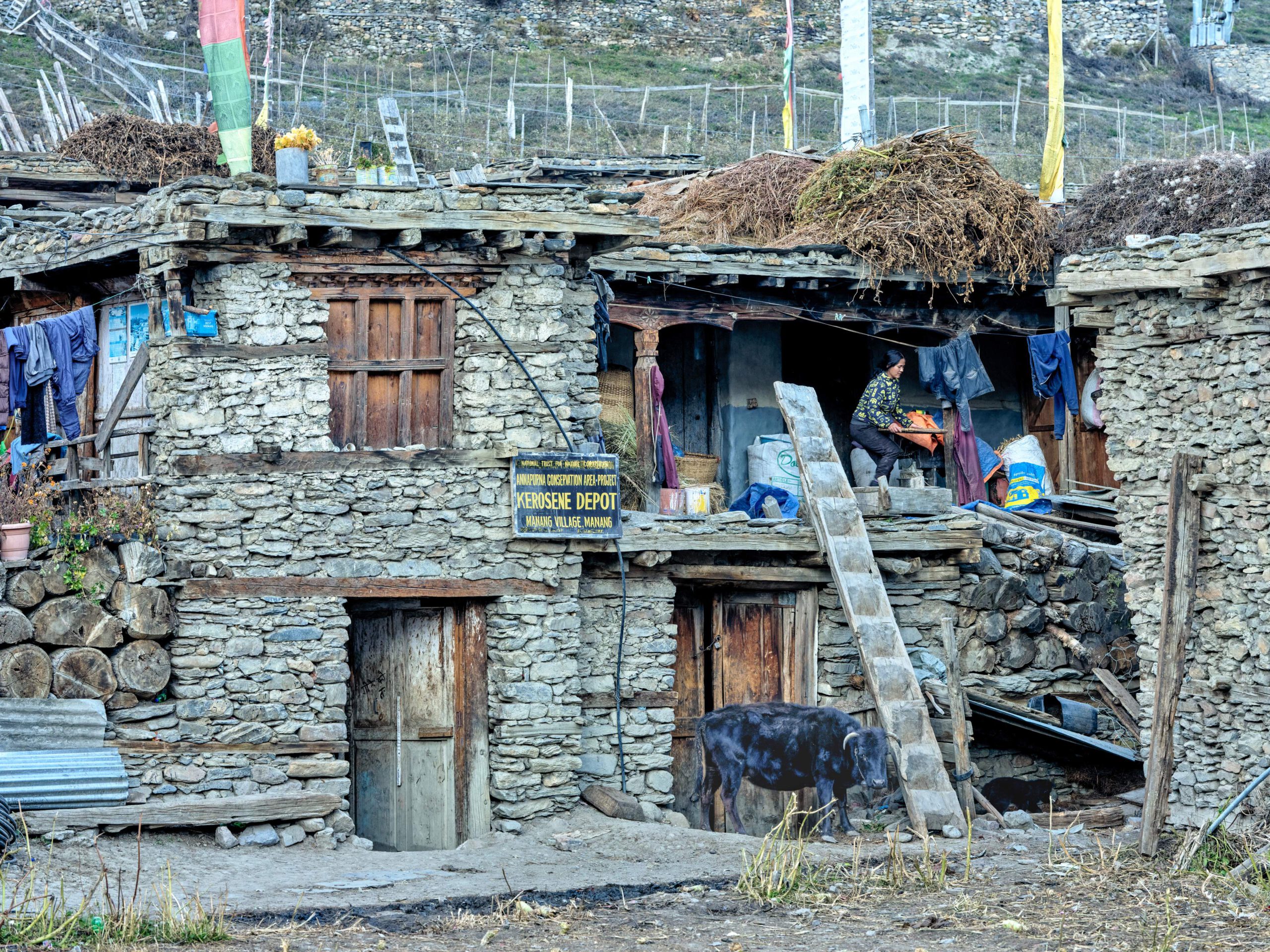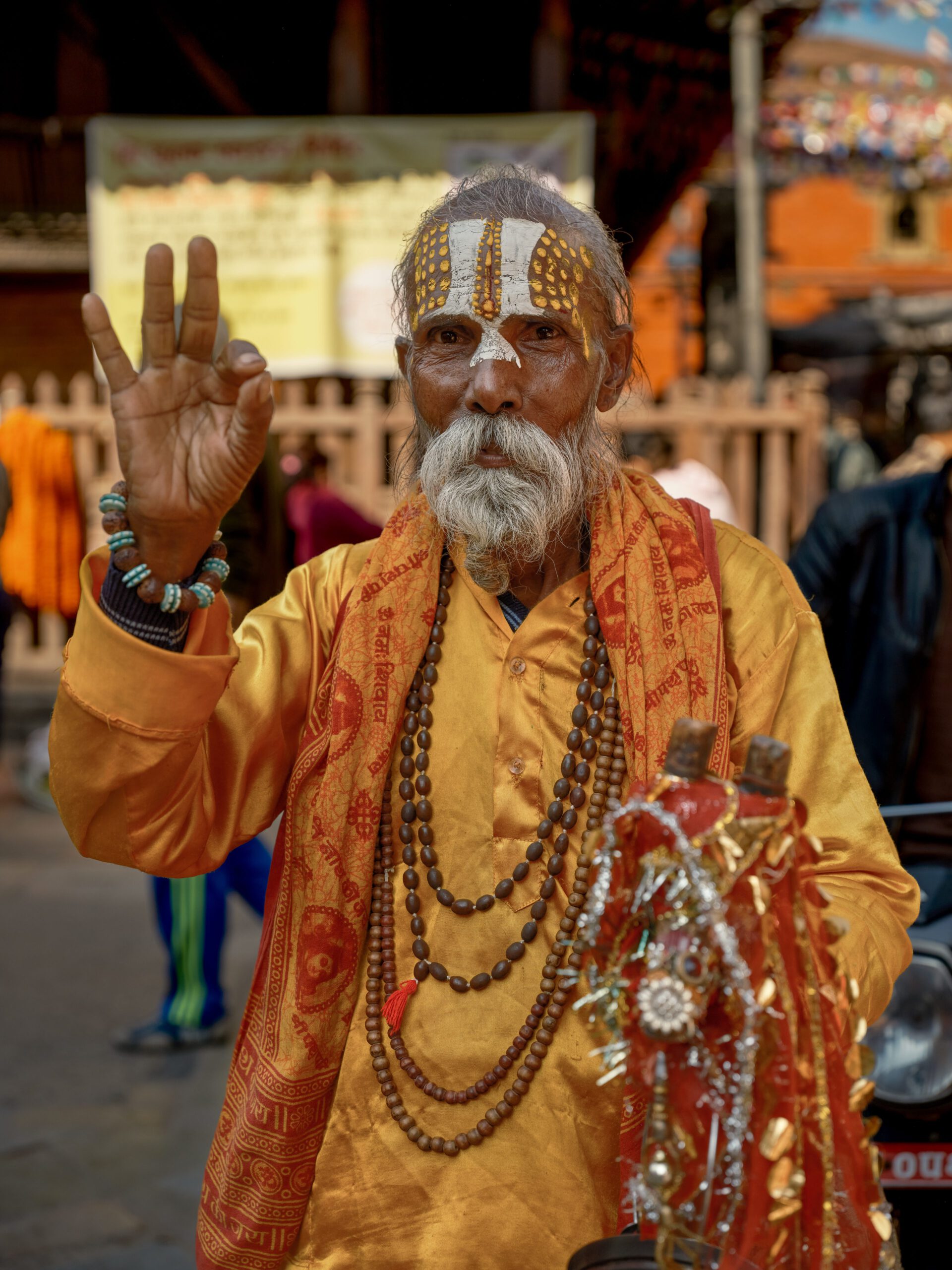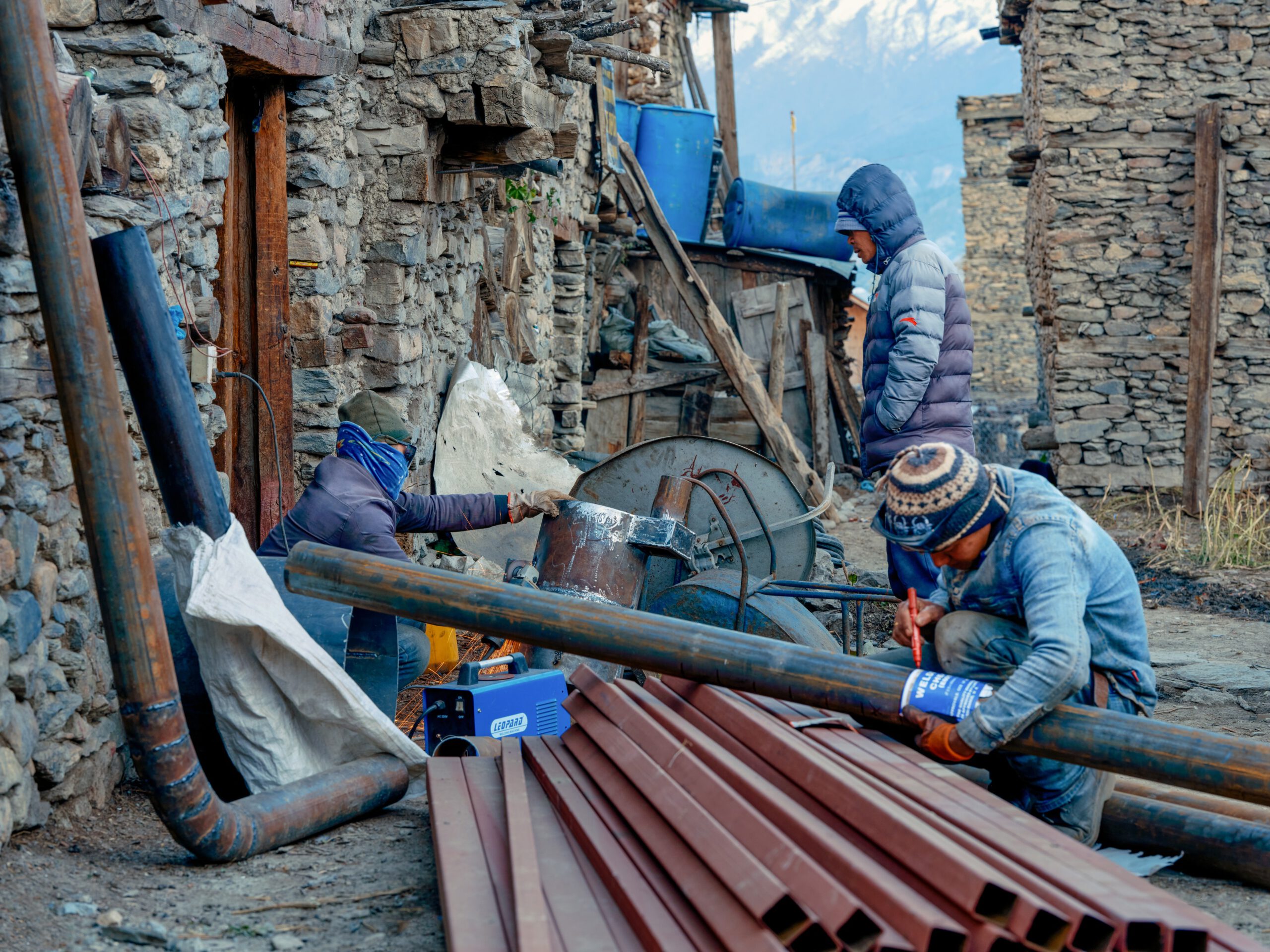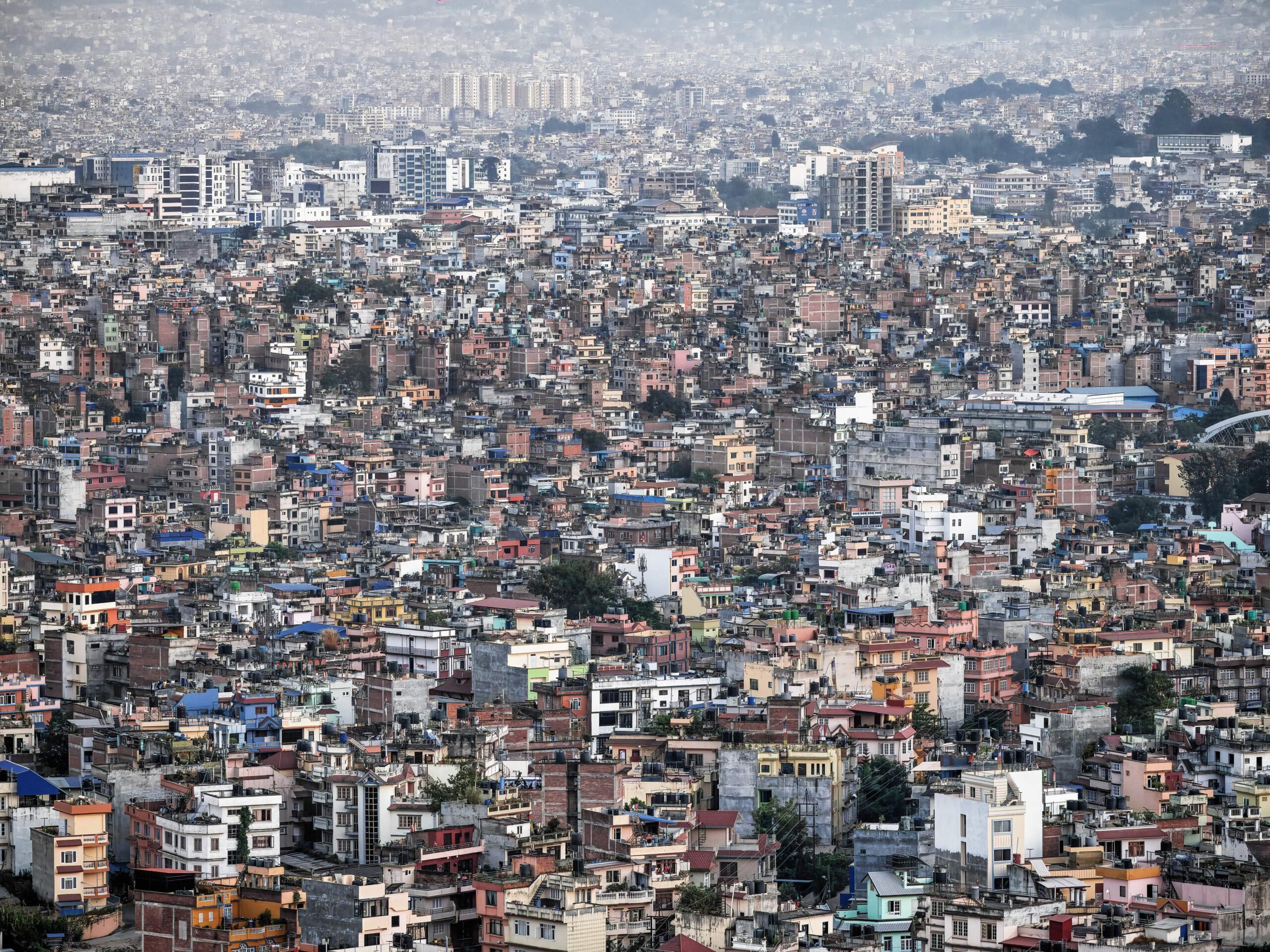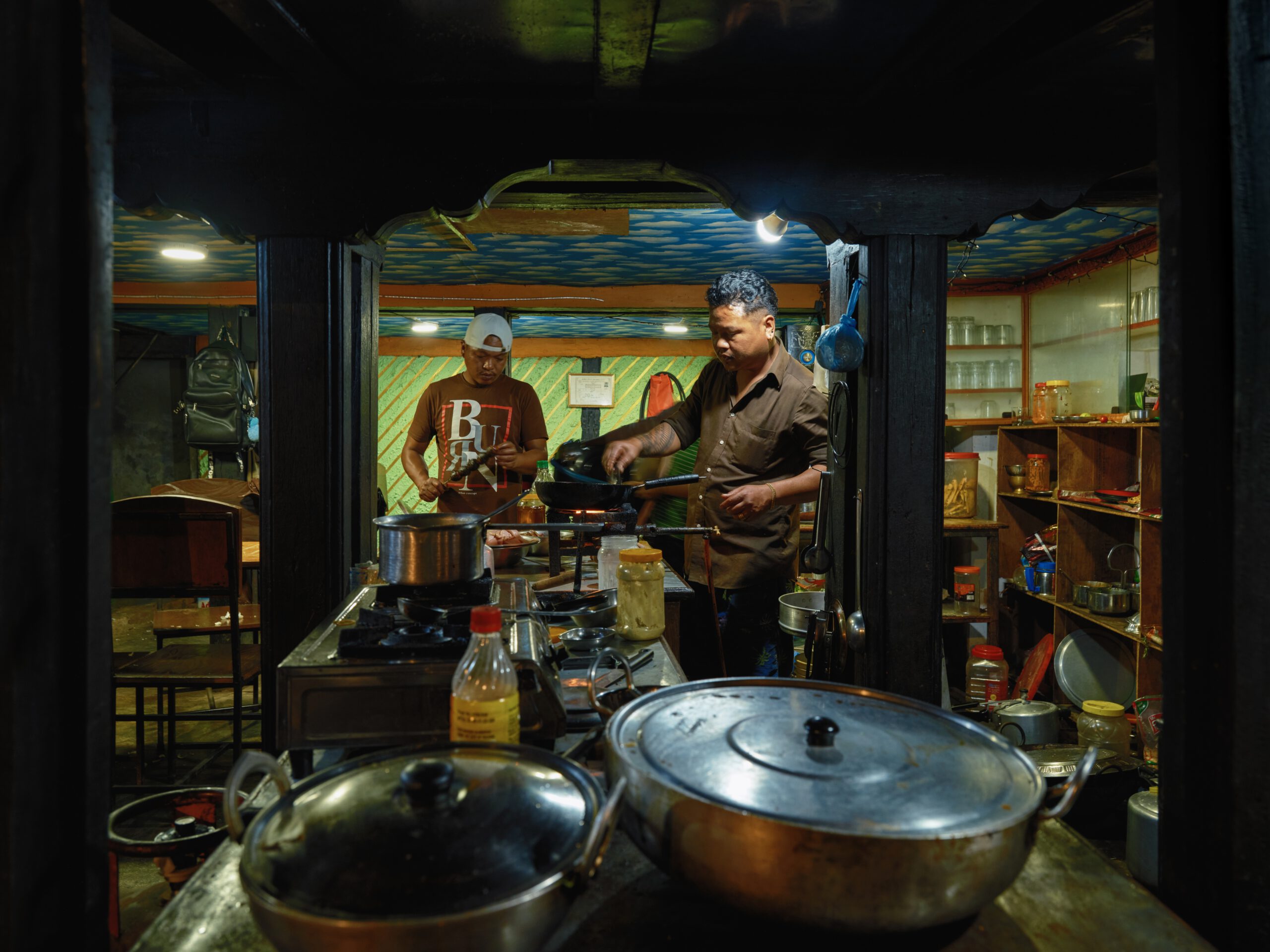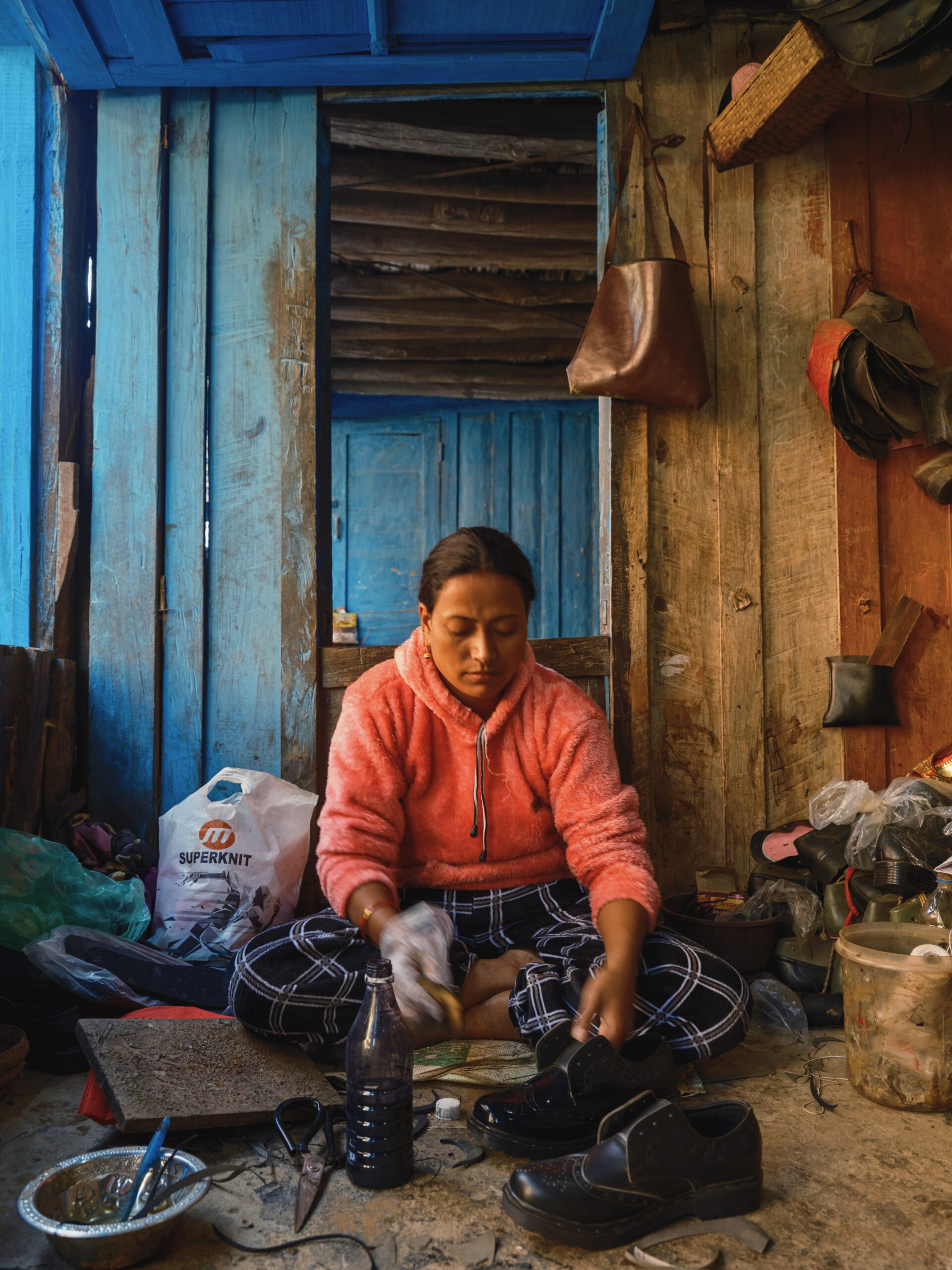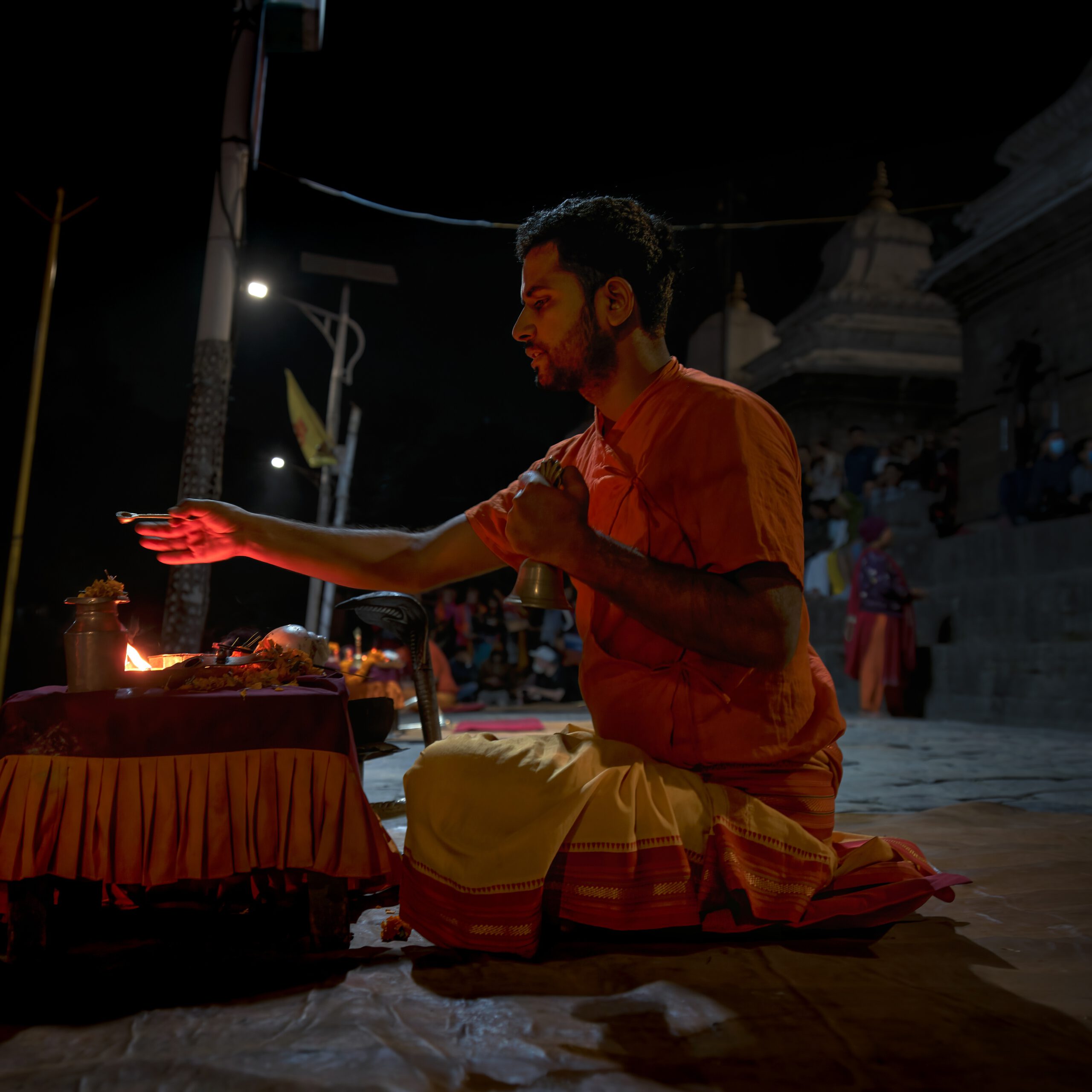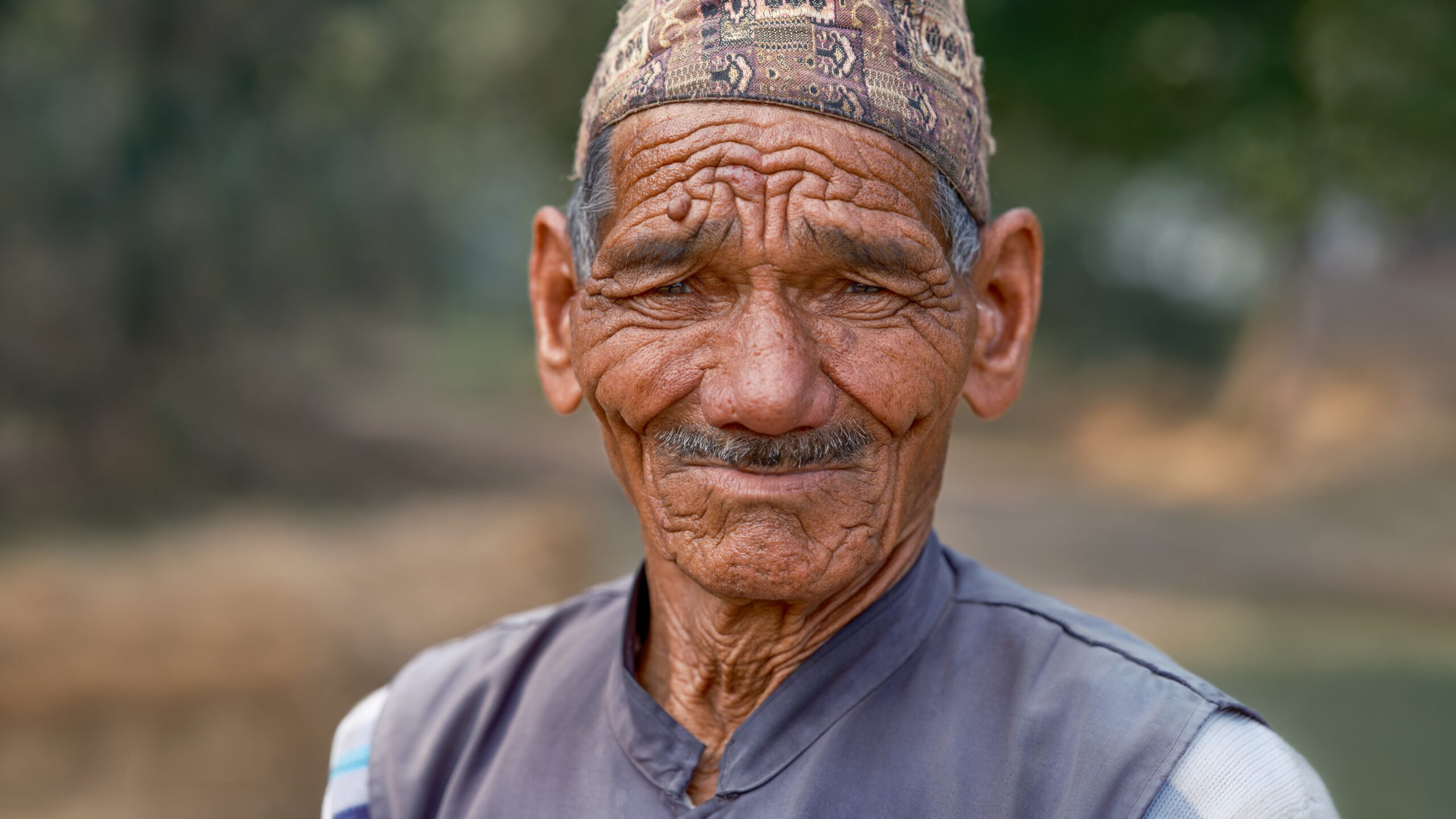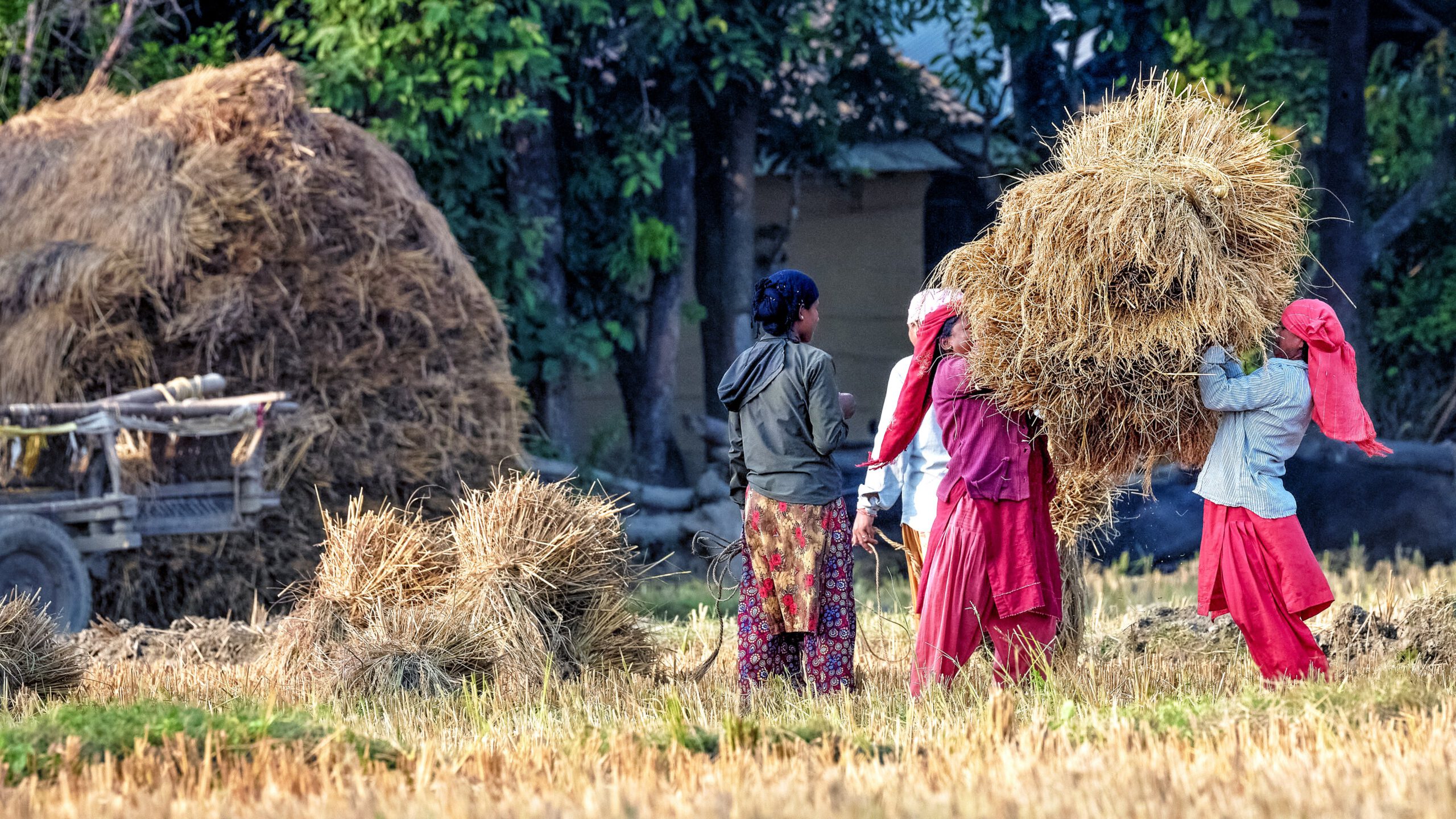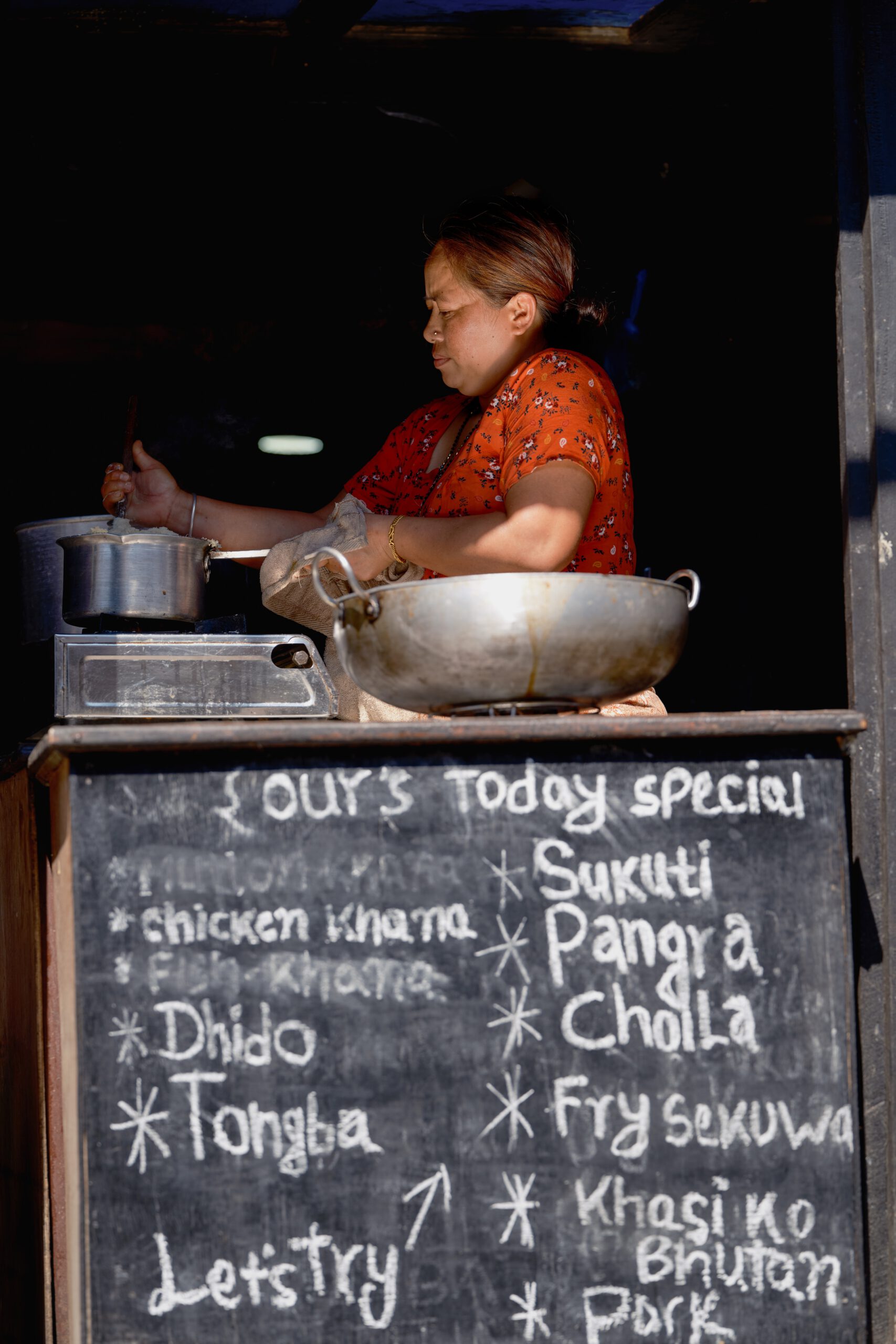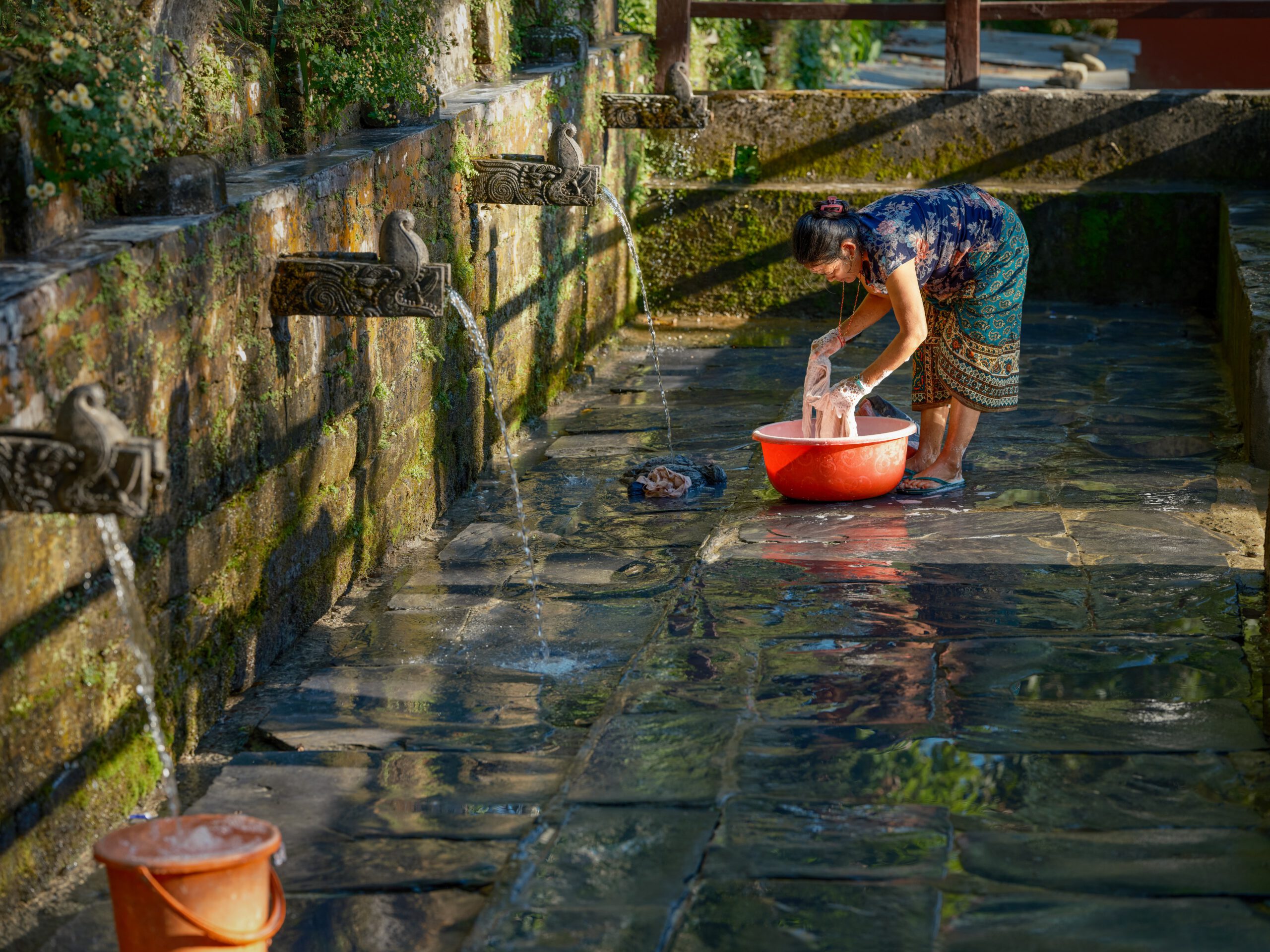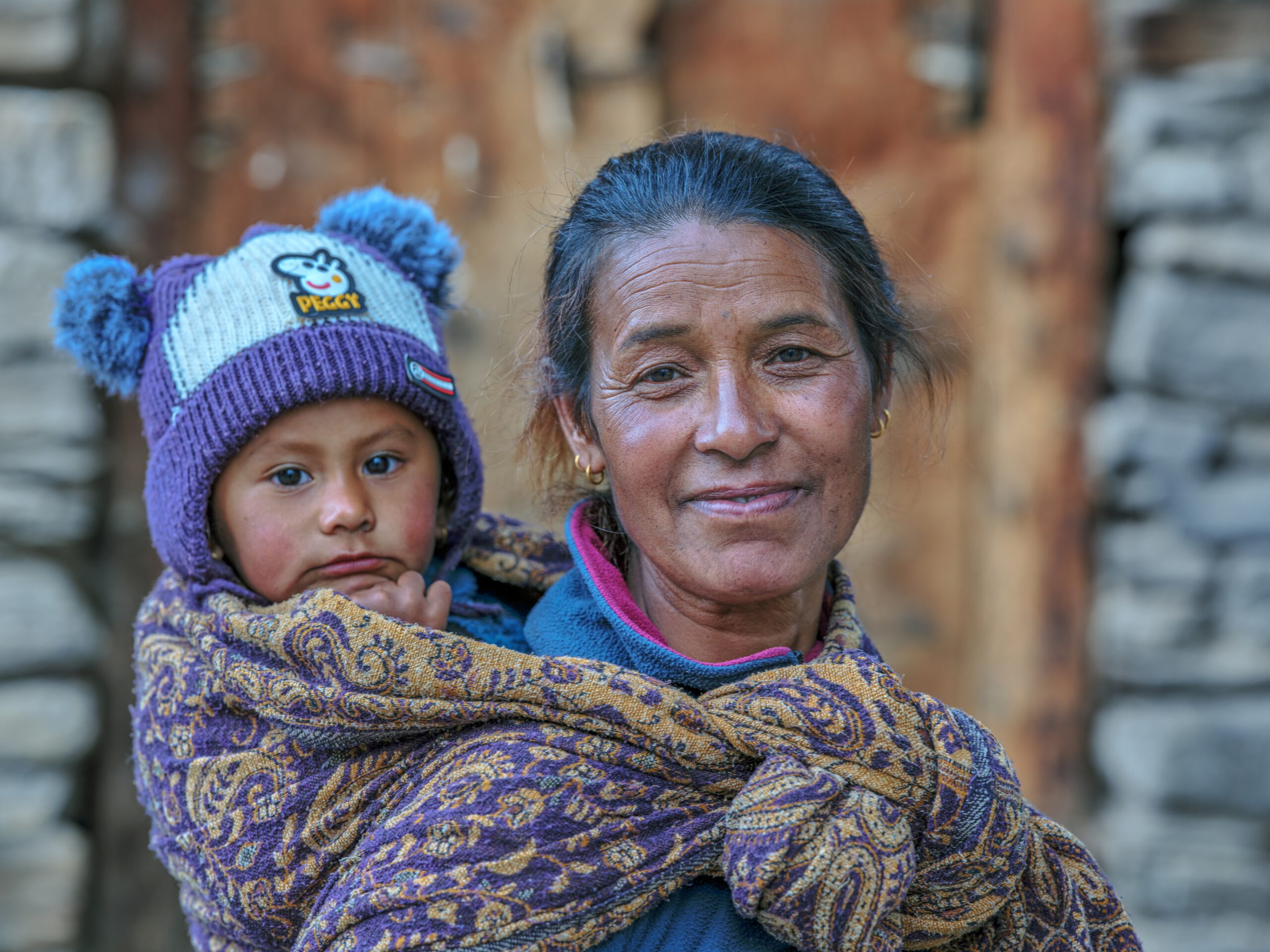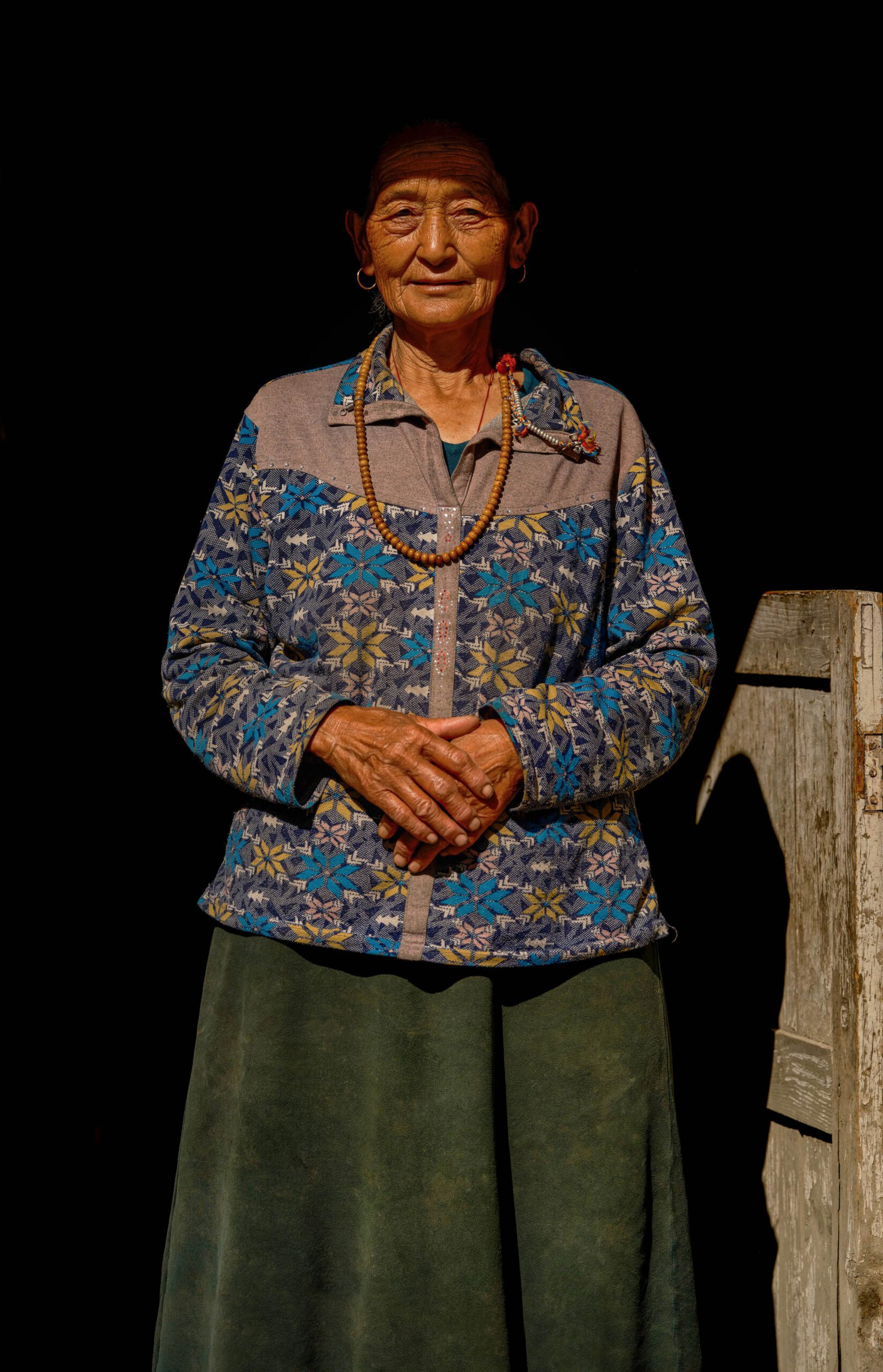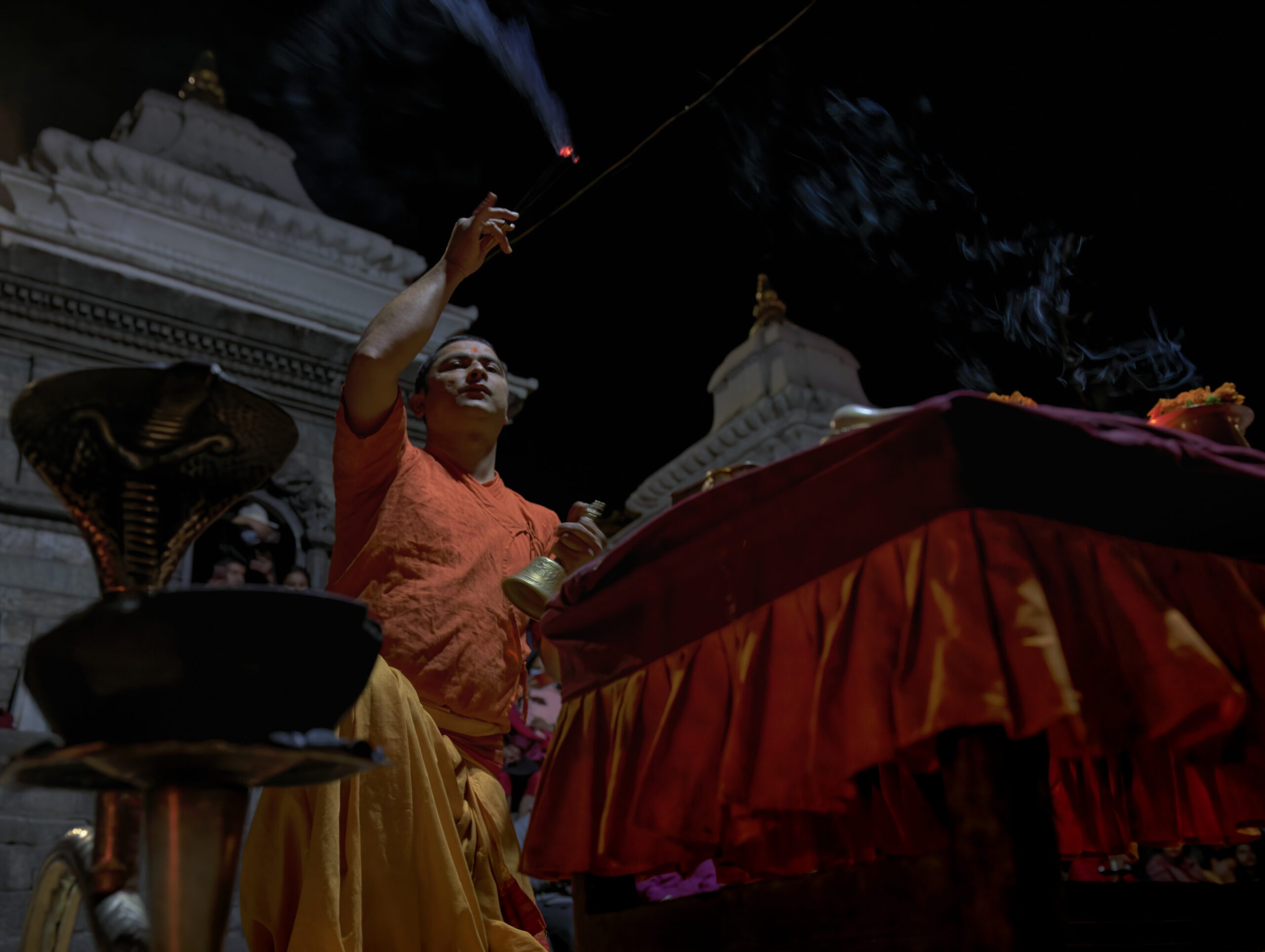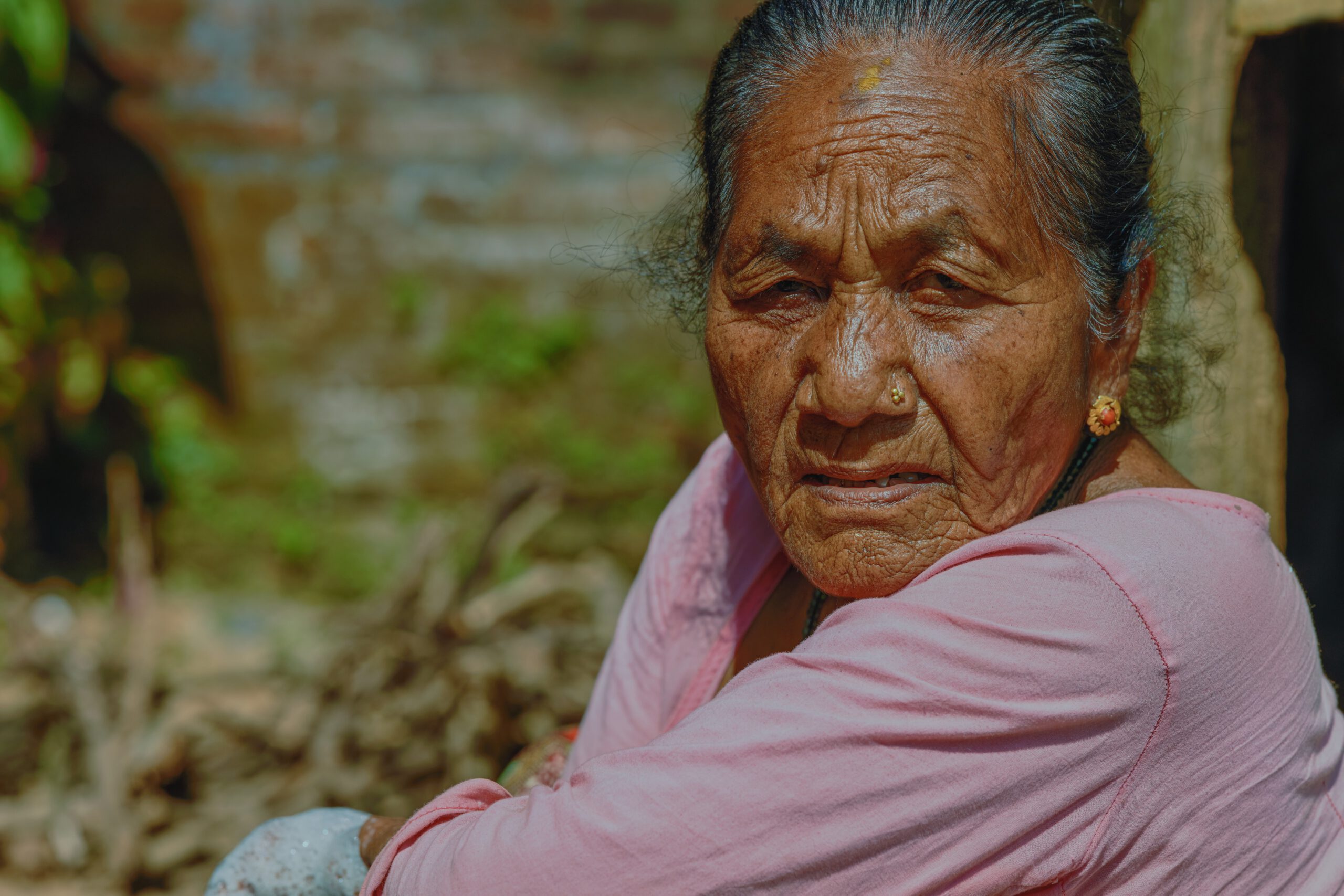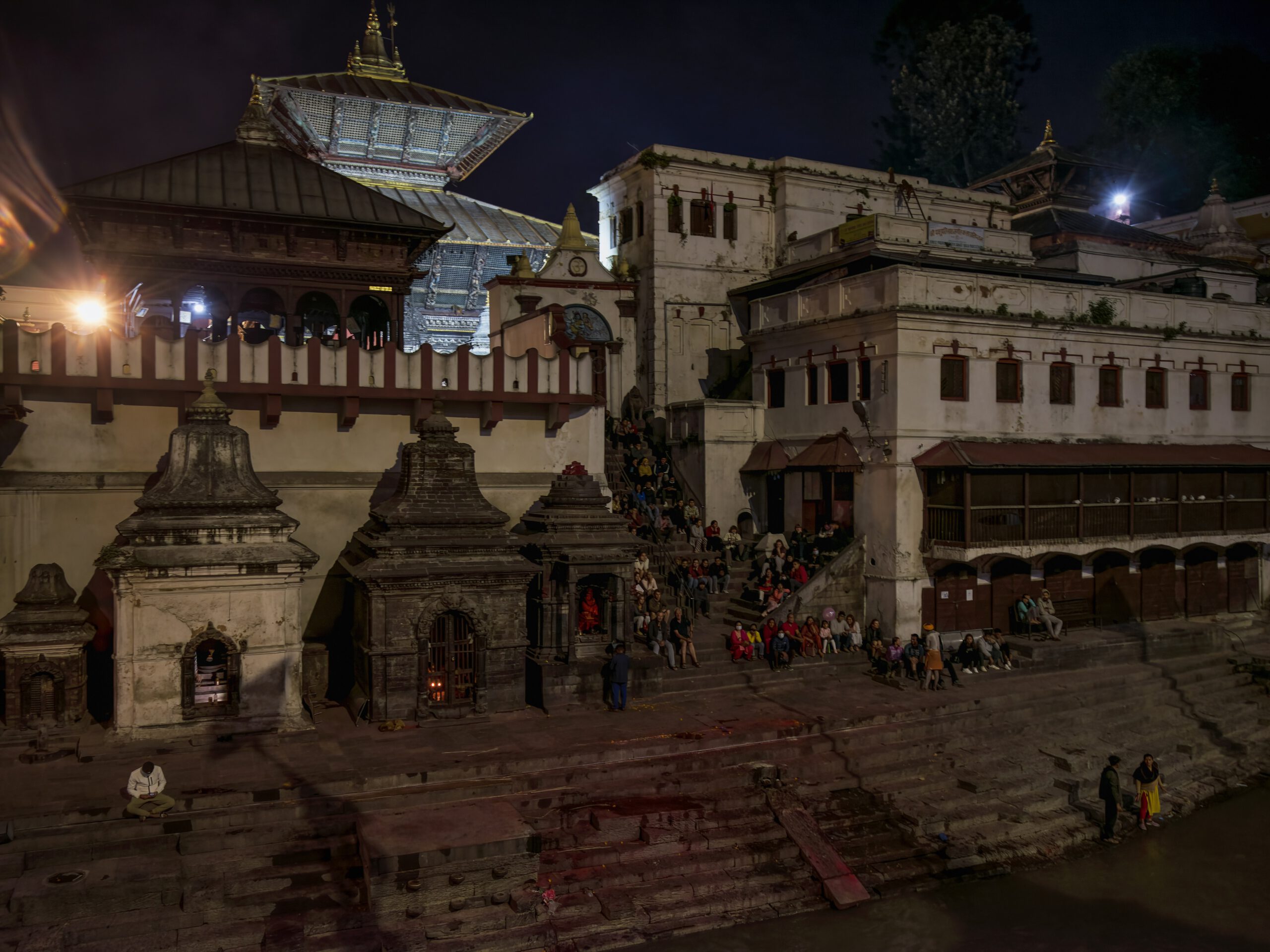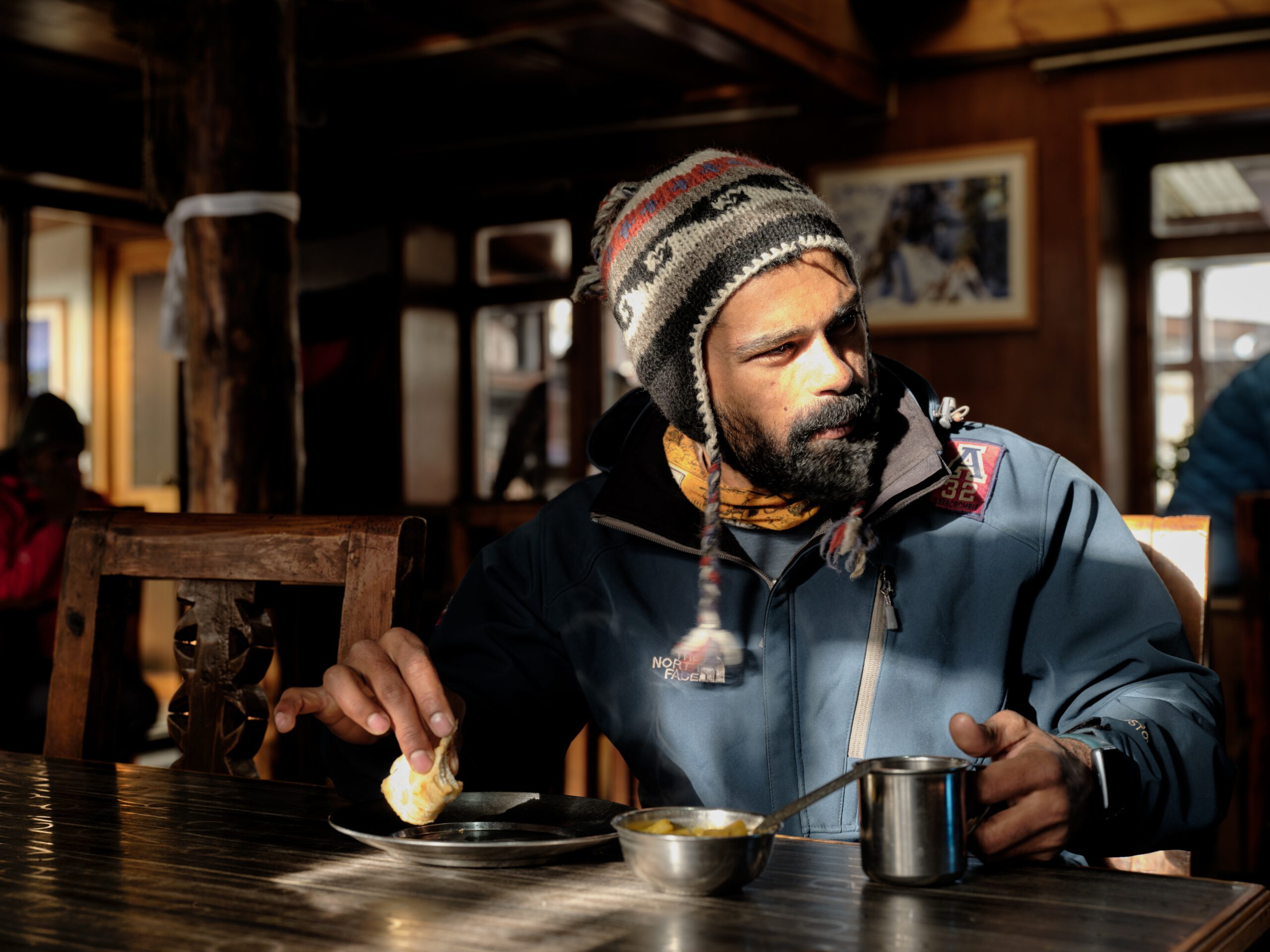MovingCamera
Photography & Travel
/// Photo trip Nepal
Namaste. Originally, in the summer of 2020, I was going on a photo trip to Colombia with the photographer and tour operator Martin Skjeldaleine, inspired by the fantastic impressions I was able to make in Brazil in 2019. However, the trip was canceled due to Corona travel regulations and should be made up for at a later date. Last year he also offered a 3-week photo trip to Nepal for October 2022, which I was able to experience now. However, the trip was canceled due to Corona travel regulations and should be made up for at a later date. Last year he also offered a 3-week photo trip to Nepal for October 2022, which I booked straight away without thinking twice, because as an India lover I always had Nepal on my wish list. Nepal lies between India and Tibet. The country is known for its temples and the Himalayan mountains, in which Mount Everest is also located. Its 30 million inhabitants live on an area of 147,181 km².
Our 8-person photo troupe met at the beginning of the journey at the airport in Frankfurt. While we were waiting for our completeness, there was a lively exchange and we got in the mood for the upcoming trip. Ahead of us was a 12.5 hour night flight with a change in Doha to the destination airport of Kathmandu, the capital of Nepal.
After our arrival at the airport in Kathmandu in the morning, Santos, our local guide, was waiting for us at the airport. Off we went to the hotel. A quick check-in, and immediately the camera started to explore the hustle and bustle in the narrow Gessen extensively. Even if the devastating earthquake in April 2019 caused great damage and sometimes destroyed some of the most important monuments and sites, a number of historical buildings in the city have been extensively rebuilt or restored since then.
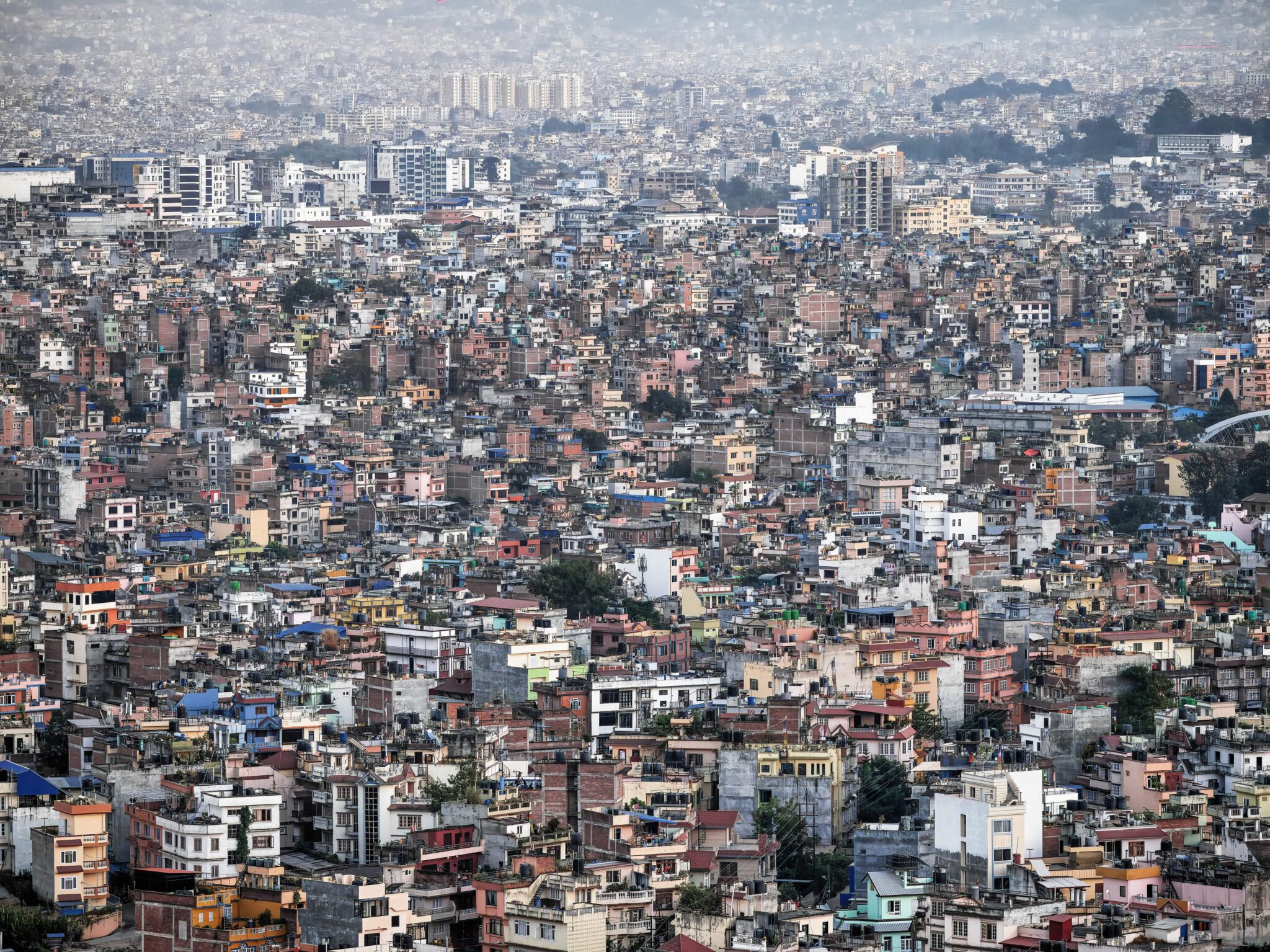
Kathmandu, the capital of Nepal, lies in a valley in the middle of the Himalayan mountains. At the center of the maze of alleyways in the old town is Durbar Square, where large crowds gather for the religious festival of Indra Jatra, which features masked dancers. Many of the city’s historic sites were damaged or destroyed in an earthquake in 2015. The Royal Palace in Durbar Square, the Hanuman Dhoka, and Kasthamandap, a wooden Hindu temple, are currently being reconstructed. In 2020, the city had approx. 1.442 million inhabitants. (Thanks to Wikipedia).
If you travel to Nepal by plane, at least if you come from Europe, you will usually end up in Kathmandu. Kathmadhu Airport is the largest of Nepal’s three international airports, along with Siddharthanagar and Pokhara.
No matter how you travel in the city, there is and will always be a swarm of vehicles of all kinds. However, you don’t necessarily move faster on foot. Everything is very narrow and many people are out and about day and night. Nevertheless, for me Kathmandu has its own allure and charm, it’s just a big city and a metropolis. Culture, history and modernity collide here. Seen from a distance, the city seems almost tidy, everything in its place, despite the fact that it is so tightly built. I thought it was great!!!
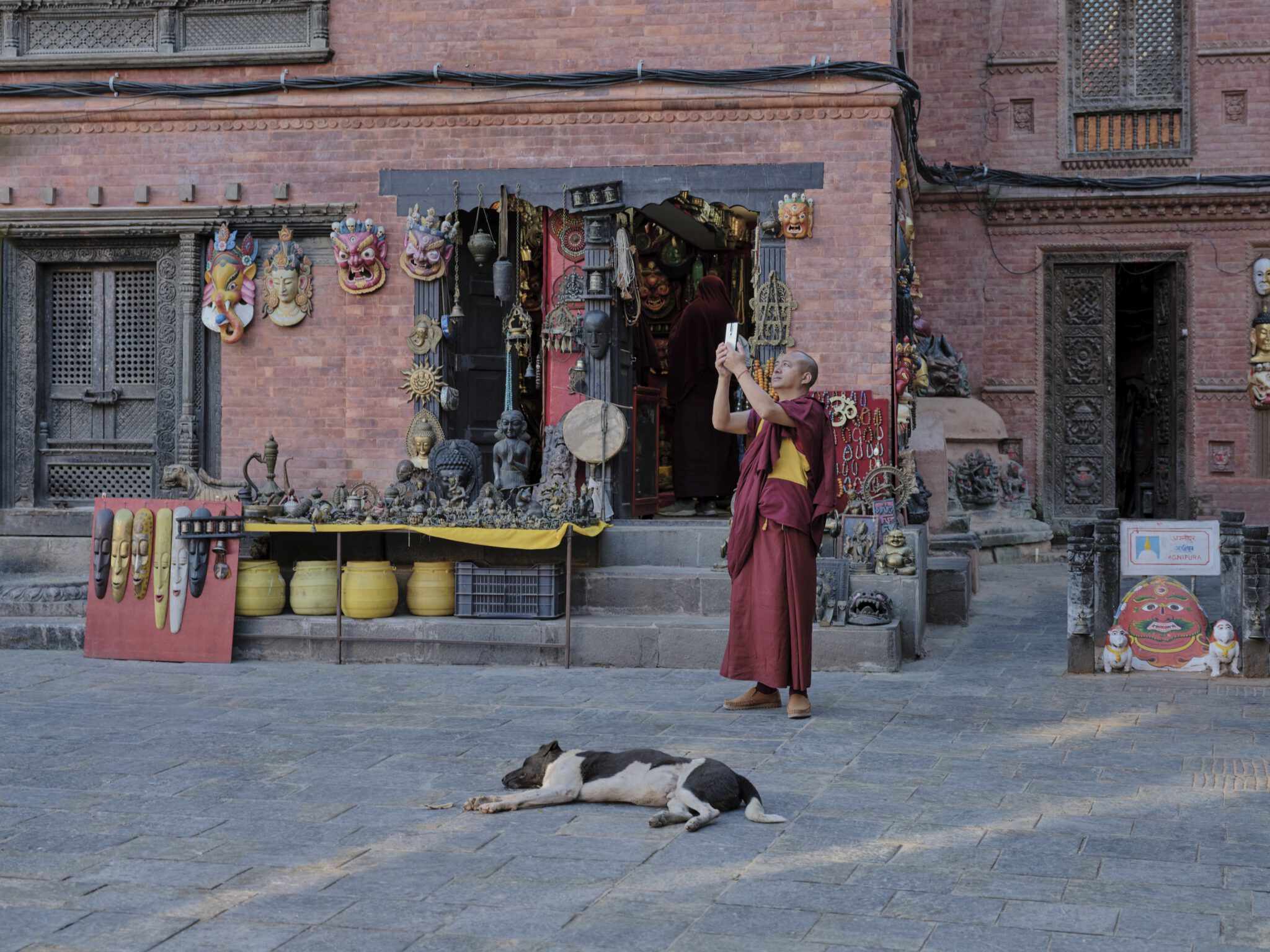
The several-day stay in Kathmandu made it possible to visit the large Buddhist-Hindu temple complex Swayambhunath – which is also simply called Swayambhu – in the western part of the city.
To experience the gold-encrusted stupa on the hilltop from up close, we climbed the 300 steps, facing Buddha’s eyes. A steep climb of stairs that is truly rewarded with a view of the sea of houses in Kathmandu. If the view is really clear, you can even see some peaks of the Himalayas in the distance.
On the way up, you will pass many monkeys that are everywhere. Even if they have gotten used to people, you shouldn’t get too close to them, they protect their young and defend them very aggressively if necessary.
Once at the top, the impressive stupa presents itself in all its beauty. It can be walked around in both directions. Along the many small paths that branch off from the stupa, countless ancient carvings, shrines and sculptures that decorate the entire temple complex can be discovered. A mystical and spiritual atmosphere is in the air. Tradition, culture and religion is omnipresent. As everywhere, a smartphone is part of the way of life here, in order to be able to organize everyday life practically.

A bit outside near Boudhanath on the outskirts of Kathmandu, away from the hustle and bustle of the big city, lies the Tibetan Buddhist monastery Kopan high above the green terraced fields. It is a member of the Foundation for the Preservation of the Mahayana Tradition, an international network of Gelugpa Dharma centers, and once served as their headquarters (thanks to Wikipedia).
People from all over the world visit this spiritual center to learn Buddhist meditation in its original form. Monks from the vast Himalayan regions allow their guests a deep insight into Tibetan wisdom. Anyone who can get involved is moving in the footsteps of Buddha in order to influence their own inner attitude and hopefully switch to general calm.
A stay of ten days is necessary to take part in one of these English-language meditation courses. Even though we didn’t have that time, it was a matter of course for us to visit there and feel the atmosphere in which a large community of monks and nuns live. For me it was a touching experience.
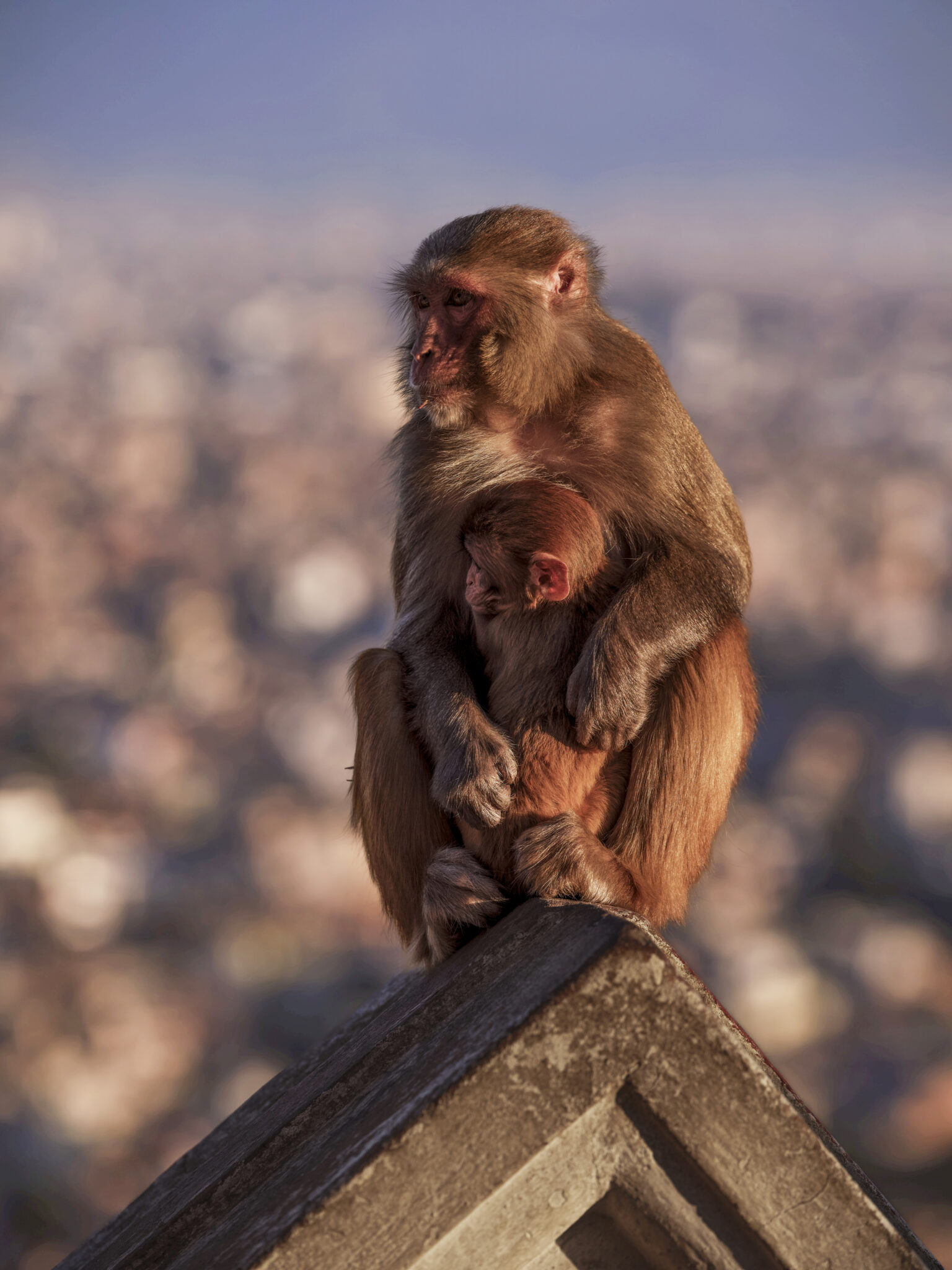
Anyone who visits the Buddhist-Hindu temple complex Swayambhunath – which is also simply called Swayambhu – in the western part of Kathmandu will be rewarded after climbing 300 steps on the hill of this temple complex worth seeing with its gold-decorated stupa and a wide view of the sea of houses in Kathmandu . If the view is really clear, you can even see some peaks of the Himalayas in the distance
In the evening, when the sunset begins to bathe the sky in its most beautiful colors, the monkeys, which we have already met on the way up, gather as ordered in their regular places on the surrounding wall.
The animals here are quite used to people and do not shy away from them in any way, albeit at a distance. For me, this is a way of capturing the closest connection between mother and cub up close.
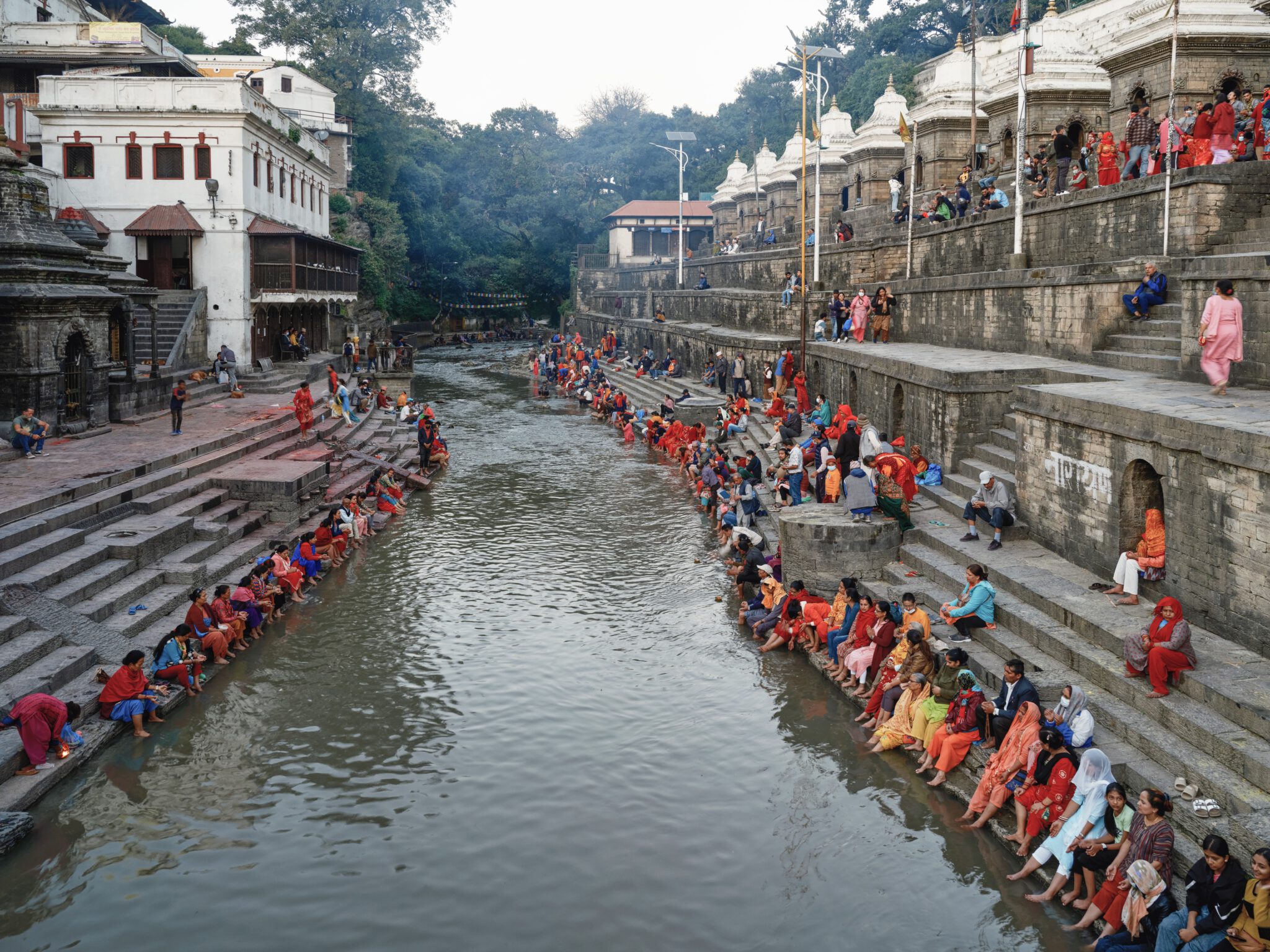
Traveling to Nepal usually begins in Kathmandu. The three days in the city brought us things worth seeing, exciting things and, on the last evening, very moving things.With all the hustle and bustle that starts very early in the morning and ends late at night, for me it is the mixture of different nationalities, cultures and religions that spread across the whole country. Officially, Nepal is a Hindu country – around 80% of the Nepalese profess Hinduism. 10% are Buddhists, 4% are Muslims and the rest is made up of Christians, Jains and followers of indigenous religions.
In the end, all large and megacities act like magnets. They attract people for all sorts of reasons. One thing is certain: if you want to live here, you have to make a living. Metropolises are almost predestined for this. A high population density allows shops, restaurants and trade of all kinds to develop. Tourism and mountaineering in the world-famous Himalayas is an additional and not inconsiderable source of income. Because here are 8 of the world’s 14 mountains that rise above the 8000 meter mark. However, we are not here for mountaineering. We take a photo journey through this country and start in Kathmandu, at 1400m. We will drive up to 3500m with our jeeps. Everything beyond that can only be done on foot or has to be flown in by helicopter.
Here we are on the banks of the Bagmati River at kathmandu. The sacred Bagmati River has another special meaning in Hinduism besides many temples on its banks. It is the place for cremation of the dead similar to the Ganges in Varanasi in India. Before the actual ceremony begins, relatives and people who wish to witness the ritual gather.
Since it is public, we were able to watch the moving events from the opposite bank. Around the Pashupatinath Temple, the relatives and also people who have no loss to mourn here today come together. Priests celebrate this ceremony according to traditional ancient rituals. Small burning vessels are set up everywhere, from which smoke rises. intermittently I perceive the ringing of bells. Ritualistic Hindu sounds emanate from some loudspeakers and mix with the chants of the bystanders
The deceased are laid out in designated spots on the plateau, where they are finally cremated and their ashes given to the river. The Bagmati River is sacred and is said to wash away sins from one’s feet. We spend a few hours here. Everything seems as unbelievable as it is beguiling. For me it is a very moving and emotional experience. Quiet and thoughtful we leave this ceremony at a late hour.
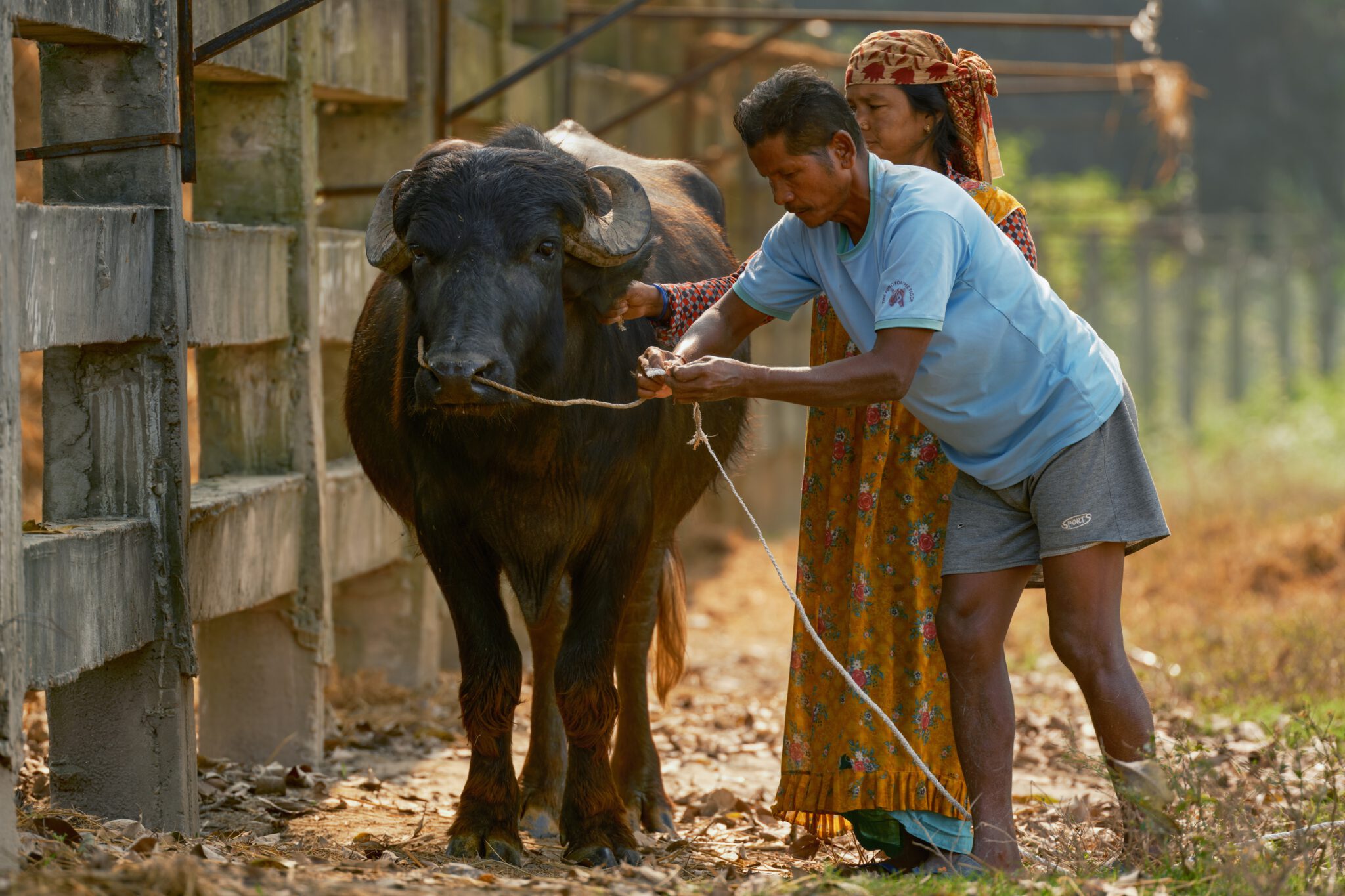
During my walk through the adjacent village near our accommodation, I saw this scene, which gave me an insight into agriculture and the use of the powerful buffalo.
In the fields the buffalos are used to pull the heavy flights over the fields. Without them, people would hardly be able to till the soil. Here the rope that was pulled through the animal’s nose is being tied, which ultimately serves to better control the behavior of the animals.
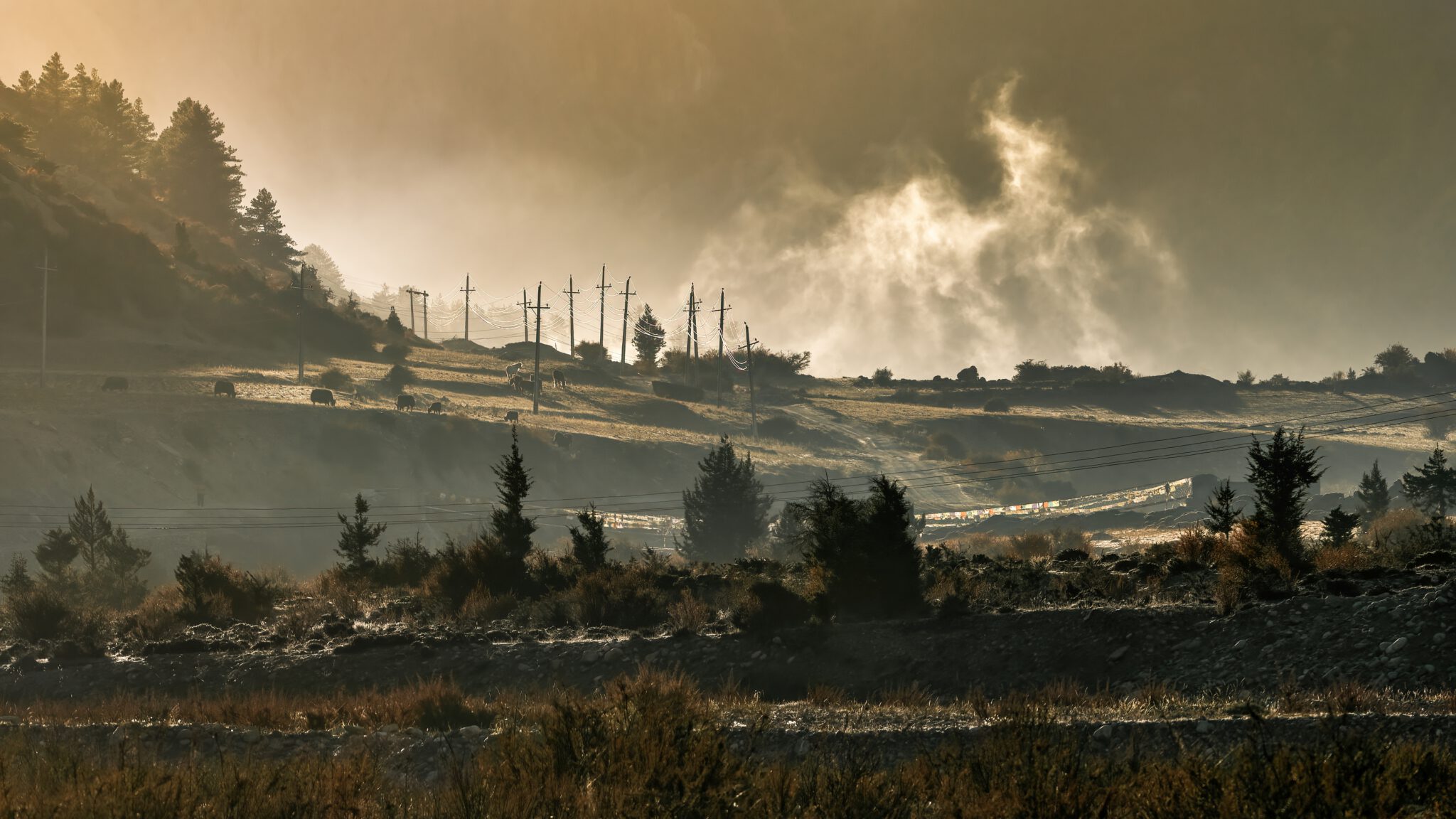
The small village of Manang is located in the Annapurna region, about 45 km north of Pokhara. It has a fantastic landscape and is an important stage on the Annapurna Circuit trekking route, especially for mountaineers. Hiking tours and expeditions into the mountains of the Himalayas start from here. The population lives in this rather barren region largely from tourism. In the shops you can buy everything from souvenirs to warm clothes and everything you need for trekking in the mountains. In the region around Manang there are also many fruit trees and, last but not least, yaks, a type of cattle that is widespread in high Asia.
The yak has its habitat above 3000 m. Yaks are extremely cold-resistant, their thick fur almost reaches the ground. Yaks use their large lungs to go up to 6000 m (all mammals that live at such high altitudes have larger lungs). Their movements are very slow, adapted to the circumstances of the altitude.
We stayed in Manang for two days. That meant we could take it pretty easy. Resting again as far as driving the jeeps is concerned. We always spend several hours in the vehicles, since a lot of time has to be planned even for shorter distances due to impassable routes. In any case, we used the precious time here to look at the village and the surrounding area. So be on your feet from morning to night. In between there was always somehow the time for breakfast, lunch and dinner, fitting to be in the accommodation.
So getting up early this morning was on the agenda. Even if it’s only a few kilometers walk to the actual destination, we know that there is always so much more to discover along the way that you also want to capture. And as it is then, the sun had already risen. If you didn’t take your pictures now, you might want to come back here the next day. I took my picture. Sunrise with a foggy mood, plus some yaks and horses in the picture that were grazing.
Time to head back. Breakfast was waiting.
